I'm not a coffee snob by any stretch of the imagination, but I do have some requirements going into a cup. First, the coffee can't be weak. I hate watery coffee, and the thin taste literally makes me gag. Second, because I like dark coffee but I can't tolerate too much bitterness, there must be milk or cream to cut the edge. I prefer whole milk or fattier, but I absolutely dislike skim milk in coffee. It is just gross. I also prefer milk to creamers. Third, although I can forgo the sugar, especially if the coffee is very creamy, I do like my coffee to have some sweetness. Cà phê sữa nóng, or Vietnamese coffee, perfectly fits this exactly: a small amount of strong, dark coffee is brewed with a drip filter and mixed with sweetened condensed milk. Voilà, it's perfect and delicious.
Being in America where coffee machines are rampant, a Starbucks is on every corner, and it seems that every other person you meet is a barista, I have a slight disdain for instant coffee. This is reinforced because most instant coffees I have sipped range from pretty gross to absolutely disgusting. If desperate, I will pull out my jar of super cheap Nescafé and mix it with hot milk and sometimes a packet of Swiss Miss in order to make it palatable. It's pretty nasty stuff. Nescafé's giant crystals seem to have trouble dissolving completely in water that is not quite hot enough. This makes it clump to anything else you add to the cup, be it sugar or powdered creamer or Swiss Miss or whatever, so when you try to drink it, you get powdery chunks of bitter brown exploding on your tongue and making you regret buying that jar in desperation. The taste is reminiscent of the crap that you scrape off the bottom of a cooking pot when you accidentally leave rice on for like an hour too long, and no amount of sugar or milk can cover it up completely. It's very unpleasant.
So I was surprised when I went to Japan, where they are picky about every subtle nuance in flavor, that my whole family drinks Nescafé. I refused the first couple cups offered to me because the thought of slogging down crystallized brown junk in hot water was so unappealing to me. I did accept one morning, though, and I was pleasantly surprised. It looks different, for one thing. Nescafé in America is the same texture as Folgers crystals-- about the size of large sand granules. In Japan, they grind it into a fine powder, the same size as creamer powder. Added to the cup were Creap, a Morinaga brand creamer product made from milk instead of corn syrup, and organic raw sugar. I have to say that it had to be one of my favorite cups of coffee ever. I won't attempt to describe the flavors since I'm not hip on coffee lingo, but the cup lacked the bitterness that I hate about American coffee crystals, it didn't have a chemical sweet taste, and the cream tasted slightly buttery, much like Japanese milk itself. Needless to say, I drank a lot of Nescafé with Creap whenever it was available.
To my dismay, nobody in Austin or San Antonio sells Creap at any of the stores I have been to (a large Chinese/Vietnamese [sort of Pan-Asian] market, a Korean market, and two small Japanese grocery stores), so I figured I wouldn't be able to enjoy that taste for some time. Even if I can't get Japanese milk in America, it would have been nice to have had a product made from Japanese milk. Anyhow, my boyfriend had been eying instant coffee/cream mixes at the Pan-Asian explosion market, and I told him that, although it's Chinese in origin, Nescafé in Japan tastes hella different from American Nescafé. We went ahead and bought a box of "Nescafé 1+ 2" (which, on the back clearly explains that 1 + 2 = 1+2. Brilliant!).
I have to say that I was gobsmacked. It may be the hidden lead or asbestos in the drink powder, but when mixed into hot milk instead of water, it tastes remarkably similar to my first cup of Nescafé and Creap. I'm not sure if I am just imagining things or not, but it has a subtle smelly-milk flavor that I remember from Japan.
I conducted an inquiry via Google, and apparently there are 200 varieties of Nescafé around the world, including the coffee by itself and the 1 + 2 = 1+2 convenience packs. Nestlé, for obvious reasons, changes its products to suit local tastes. It makes adapt to sell your product, but sometimes I wonder if Americans actually prefer the products that are made available to them, or if they don't know any better so they've never have to form a preference for other things. There are many American foods that I love, but there are even more that just confuse me as to how anyone could like them at all, or feel comfortable putting that much salt, sugar, MSG, dyes, preservatives etc. into their bodies. Now I am ranting. Anyway, that whole Time collection of articles is pretty interesting-- read the whole "issue" or read about the different varieties of the same brand around the world.
Anyhow, Nescafé 1 + 2 at the Chinese grocery store. It tastes good in milk.
Wednesday, November 28, 2007
Monday, November 26, 2007
Fish Markets and Carnies
Starting to update the rest of my adventures, finally. I started my trip by writing somewhat detailed entries into a notebook, but lost the energy to do so. Luckily, since I took pictures, I am reminded of at least the more exciting parts of my visit.
On the first of November, Mom and I decided we should go to Tsukiji and get in on some of the fish market action that takes place there. Since the most exciting part-- the tuna auction-- is apparently closed to the public (and is at 5am anyway), we decided just to wander around the gigantic market and eat lunch afterward.
We left Fussa around 9 in the morning. Although our original itinerary said to get off the Chuo Line at Yotsuya Station and switch to the subway from there, Mom thought that it'd be better if we got off at Tokyo Station and jump on a line bound for Hatchoubori, and then from there take the Hibiya subway line to Tsukiji Station. I don't think we saved any time or money, but it was an experience, trekking down, down, down, and down farther still in Tokyo Station until we reached the Keiyo Line platform. From there it was only one stop to Hatchoubori, and from Hatchoubori it was only one stop on the Hibiya subway line to Tsukiji. It was a tiny station, and the bathroom was yucky. I wasn't surprised.
Around the corner from the station was the Tsukiji Hongwanji, a rather large and very South Asian-styled Buddhist temple. The architecture was fascinating, and the inside was even more ornate than the outside. It reeked of incense, and Mom and I at first thought we had stumbled upon the latter half of someone's funeral. When we exited, we noticed that volunteers were busily packing welcome bags for an appreciation ceremony to take place later for rich people who contributed large sums of money to a local dentistry college. We didn't feel bad after that point.
Mom wanted to check out a museum that supposedly had exhibits with information on the fish market. Luckily it was right next to the market and we didn't have to go out of our way to find it because it turned out to be a single room with books and pamphlets on fish and maps to guide you through the different vendors in the market. It was a little disappointing, but we went ahead to the market itself.
Tsukiji's fish market is huge. Imagine, if you will, the largest warehouse you have ever seen, and multiply it by like, 5 or something. I may be exaggerating, but it's pretty dang huge inside, and it houses dozens (hundreds maybe?) of vendors. We arrived a bit before noon, when the market had died down and all the fish mongers were packing up to leave. It was still busy, still full of tourists, and many vendors were still selling fish (amongst other, less fish-like denizens of the deep). The alarming thing, though, was that through the narrow corridors zoomed guys on bicycle-powered carts, three-wheel motorbikes, and heavy-duty motorized carts that were probably zipping by at 15 miles an hour on the wet, fishy floors. It's not a place for casual tourists with large backpacks overflowing with Naruto posters and rolling luggage-- it's a place of srs bznss where restaurateurs and grocery sellers buy their fresh fish for the day, or for Average Joe to get a good price on his tuna steak dinner. Etiquette prevails at the market, and Mom read on the Japanese site that you shouldn't haggle prices with the fish mongers, as it's seen as being disrespectful and rude, challenging the price that an experienced fisherman places on his catch. "Can you make this cheaper?" is equivalent to calling him a liar, and may get you booted out of his 3x5 space with many harsh words following you.
After dodging carts, puddles, and tuna carcasses, Mom and I decided that looking at thousands of dead fish on ice in various states of dismemberment made us hungry for the real thing. We headed to the restaurant area where, even hours after they had opened, there were lines flowing out the doors to get the freshest of the day's catch for lunch. We were surprised at how popular the non-fish places were. Bafflingly, katsudon and ramen shops had the same humongous lines. We shrugged, and waited for a random place to seat us. Luckily, we only waited about 20 minutes or so for a table. Not too bad, considering people claimed to have waited for hours to get a seat at Tsukiji restaurants.
We chose a place called うまい鮨勘 (Umai Sushikan), which literally means "Tasty Sushi Sense." We were sat on the sushi bar, which Mom disliked, but I enjoyed watching the chefs work their magic by quickly squeezing together the nigiri balls and slapping the freshly-sliced fish on top, all at breakneck speed, and all while calling out "Welcome!" and "Thank you!" and glancing down at tiny hand-written orders. I got a plate with some variety, from tuna and salmon to scallop and roe. The egg was cute. While I usually don't care much for egg, this one had "うまい鮨勘" stamped on the side. That was a nice touch. The miso soup, however, was something I did not enjoy even slightly. It was made with fish scraps and tasted exactly like hot ocean brine with thin bones and vegetable particles floating in it. Mom drank both our bowls. I couldn't stomach it.
Mom had left her denim jacket at the library the previous day, so I lent her a long-sleeved shirt to wear for the day. Apparently she really wanted to lose my shirt, too, because she left it in the restaurant. Luckily we realized it was gone minutes after leaving the place, so we ran back and retrieved it. We briefly visited a small shrine just outside the fish market area and headed to a hospital where they had a free observation deck on the 47th floor. It was extremely warm, but the view was great. Mom rested her feet for a while as I took lots of pictures out the windows. She asked a lady for directions to the nearest JR station, and out we headed.
We walked through Ginza on our way to the Yuurakucho station. Although it's a shopping mecca, I wasn't impressed by the street we walked along. It was mostly office buildings with young men in suits, squatting on the sidewalk while smoking and chatting on their cell phones-- an odd sight, indeed. Just before the station, I was distracted by a troupe of girls doing a traditional drum performance outside of a newly-opened pachinko hall. I stopped to take video of them-- it was impressive how much energy they had. My arm was getting tired just holding the camera, and here they were jumping up and down beating enormous drums strapped over their shoulders. Crazy.
We hopped on a line bound for Ueno, as Mom wanted to walk from there to Asakusa. We briefly stopped in Ameyoukocho, an alley full of small shops and street vendors peddling cheap wares, to ask for directions before taking the very long and somewhat painful walk to Asakusa. It took us almost an hour to get to the Kaminarimon, which is the gigantic red lantern that welcomes you to the street where all the vendors set up shop. The road we took to get there was lined with stores specializing in 仏壇 (butsudan), which are altars for deceased family members. It was extremely creepy, and it was obvious that that part of town was probably aging and full of a lot of old people on the verge of kicking the bucket.
When we finally reached Kaminarimon, evening was rapidly approaching and we only had maybe an hour or two of sunlight left. The first vendor we came across on Nakamise (the road where all the peddlers set up shop) was selling fresh-made red bean-filled ningyoyaki, which is a small cake made of flour and egg. molded into shapes. We bought two bags to take home to Obaachan and a bag of hot ones to eat while we walked. The people selling them were exceedingly brusque, which totally surprised us. All of the vendors were loud, rude, and pushy, and I couldn't help but be reminded of dirty carnies in America. I felt this whole street was a giant tourist trap, and Mom agreed. We kept snagging samples at the osembe shops, and Mom deliberated on whether or not to buy a bag. She ultimately decided against it, as they were quite expensive (as were all the other things on that street). The ningyo were cheap, at least.
We visited the temple at the end of Nakamise, called Sensoji. It's the oldest temple in Tokyo and is something like 1500 years old. Plenty of people were milling about, clothing statues, washing their hands at the entrance, tossing money into the offering bins and praying. Prayer rituals are serious business in Japan, and people had some elaborate arm gestures and bowing maneuvers carefully choreographed to achieve maximum levels of Buddha-pleasing. It was impressive.
As the sun began to dip down, Mom and I discussed what we would do for dinner, as we hadn't eaten since lunch many hours previously, and although we weren't starving we figured we should eat something. We wandered around Asakusa looking for a good deal on food, but decided that perhaps Shinjuku might offer something better. Instead of walking back to the JR station in Ueno we hopped on the subway and took it back to Ueno station where we got onto the Yamanote heading south where we expected to switch to the Chuo line back to Shinjuku (the reason being that Tokyo is the terminus for the Chuo line and we'd be guaranteed a seat). However, since we were able to get a seat on the Yamanote in Ueno, we rode it the whole way to Shinjuku, even though it was like taking a route that went around 3 sides of the square. We didn't mind, and welcomed the rest.
When we got into Shinjuku, it was packed with people, like usual. We went into Kabukicho to look for a restaurant and ended up wandering for almost an hour, unable to find any place that was both inexpensive and tasty-looking. We did see a trio consisting of a drummer, a saxophone player, and a guy holding a banner for a bar; they were playing "Izakaya," a kayoukyoku song about a man trying to pick up a girl at a plain, generic bar ("There's no pictures, no flowers, no music, no words, no jokes or anything to decorate this kind of bar"). It was cute. We also saw advertisements for host bars full of tanned, bleached, airbrushed young men who would be more than happy to let you buy them expensive alcohol and food to fulfill your sad, lonely office lady life.
We got lost looking for the Isetan, tempted by its purportedly abundant food basement, and although we found it, it was close to closing time, so we sampled milk and tofu, pickles and salad dressings, weighed the benefits versus the costs of some of their produce, and ultimately left with nothing. We caught the train at Shinjuku station and headed back to Fussa. When we arrived, we had enough time to peruse the deals at the Ozam before they closed for the night. There we picked up dinner-- fried oyster bento box, korokke, and gyoza, all at half-price. We enjoyed our dinner at home, and although it was late and we were tired, it was oh-so satisfying (and probably a lot better than anything we could have picked up for 4 times the price at a normal restaurant). It was a fun-filled day, and exhausting because of all the walking we did.
On the first of November, Mom and I decided we should go to Tsukiji and get in on some of the fish market action that takes place there. Since the most exciting part-- the tuna auction-- is apparently closed to the public (and is at 5am anyway), we decided just to wander around the gigantic market and eat lunch afterward.
We left Fussa around 9 in the morning. Although our original itinerary said to get off the Chuo Line at Yotsuya Station and switch to the subway from there, Mom thought that it'd be better if we got off at Tokyo Station and jump on a line bound for Hatchoubori, and then from there take the Hibiya subway line to Tsukiji Station. I don't think we saved any time or money, but it was an experience, trekking down, down, down, and down farther still in Tokyo Station until we reached the Keiyo Line platform. From there it was only one stop to Hatchoubori, and from Hatchoubori it was only one stop on the Hibiya subway line to Tsukiji. It was a tiny station, and the bathroom was yucky. I wasn't surprised.
Around the corner from the station was the Tsukiji Hongwanji, a rather large and very South Asian-styled Buddhist temple. The architecture was fascinating, and the inside was even more ornate than the outside. It reeked of incense, and Mom and I at first thought we had stumbled upon the latter half of someone's funeral. When we exited, we noticed that volunteers were busily packing welcome bags for an appreciation ceremony to take place later for rich people who contributed large sums of money to a local dentistry college. We didn't feel bad after that point.
Mom wanted to check out a museum that supposedly had exhibits with information on the fish market. Luckily it was right next to the market and we didn't have to go out of our way to find it because it turned out to be a single room with books and pamphlets on fish and maps to guide you through the different vendors in the market. It was a little disappointing, but we went ahead to the market itself.
Tsukiji's fish market is huge. Imagine, if you will, the largest warehouse you have ever seen, and multiply it by like, 5 or something. I may be exaggerating, but it's pretty dang huge inside, and it houses dozens (hundreds maybe?) of vendors. We arrived a bit before noon, when the market had died down and all the fish mongers were packing up to leave. It was still busy, still full of tourists, and many vendors were still selling fish (amongst other, less fish-like denizens of the deep). The alarming thing, though, was that through the narrow corridors zoomed guys on bicycle-powered carts, three-wheel motorbikes, and heavy-duty motorized carts that were probably zipping by at 15 miles an hour on the wet, fishy floors. It's not a place for casual tourists with large backpacks overflowing with Naruto posters and rolling luggage-- it's a place of srs bznss where restaurateurs and grocery sellers buy their fresh fish for the day, or for Average Joe to get a good price on his tuna steak dinner. Etiquette prevails at the market, and Mom read on the Japanese site that you shouldn't haggle prices with the fish mongers, as it's seen as being disrespectful and rude, challenging the price that an experienced fisherman places on his catch. "Can you make this cheaper?" is equivalent to calling him a liar, and may get you booted out of his 3x5 space with many harsh words following you.
After dodging carts, puddles, and tuna carcasses, Mom and I decided that looking at thousands of dead fish on ice in various states of dismemberment made us hungry for the real thing. We headed to the restaurant area where, even hours after they had opened, there were lines flowing out the doors to get the freshest of the day's catch for lunch. We were surprised at how popular the non-fish places were. Bafflingly, katsudon and ramen shops had the same humongous lines. We shrugged, and waited for a random place to seat us. Luckily, we only waited about 20 minutes or so for a table. Not too bad, considering people claimed to have waited for hours to get a seat at Tsukiji restaurants.
We chose a place called うまい鮨勘 (Umai Sushikan), which literally means "Tasty Sushi Sense." We were sat on the sushi bar, which Mom disliked, but I enjoyed watching the chefs work their magic by quickly squeezing together the nigiri balls and slapping the freshly-sliced fish on top, all at breakneck speed, and all while calling out "Welcome!" and "Thank you!" and glancing down at tiny hand-written orders. I got a plate with some variety, from tuna and salmon to scallop and roe. The egg was cute. While I usually don't care much for egg, this one had "うまい鮨勘" stamped on the side. That was a nice touch. The miso soup, however, was something I did not enjoy even slightly. It was made with fish scraps and tasted exactly like hot ocean brine with thin bones and vegetable particles floating in it. Mom drank both our bowls. I couldn't stomach it.
Mom had left her denim jacket at the library the previous day, so I lent her a long-sleeved shirt to wear for the day. Apparently she really wanted to lose my shirt, too, because she left it in the restaurant. Luckily we realized it was gone minutes after leaving the place, so we ran back and retrieved it. We briefly visited a small shrine just outside the fish market area and headed to a hospital where they had a free observation deck on the 47th floor. It was extremely warm, but the view was great. Mom rested her feet for a while as I took lots of pictures out the windows. She asked a lady for directions to the nearest JR station, and out we headed.
We walked through Ginza on our way to the Yuurakucho station. Although it's a shopping mecca, I wasn't impressed by the street we walked along. It was mostly office buildings with young men in suits, squatting on the sidewalk while smoking and chatting on their cell phones-- an odd sight, indeed. Just before the station, I was distracted by a troupe of girls doing a traditional drum performance outside of a newly-opened pachinko hall. I stopped to take video of them-- it was impressive how much energy they had. My arm was getting tired just holding the camera, and here they were jumping up and down beating enormous drums strapped over their shoulders. Crazy.
We hopped on a line bound for Ueno, as Mom wanted to walk from there to Asakusa. We briefly stopped in Ameyoukocho, an alley full of small shops and street vendors peddling cheap wares, to ask for directions before taking the very long and somewhat painful walk to Asakusa. It took us almost an hour to get to the Kaminarimon, which is the gigantic red lantern that welcomes you to the street where all the vendors set up shop. The road we took to get there was lined with stores specializing in 仏壇 (butsudan), which are altars for deceased family members. It was extremely creepy, and it was obvious that that part of town was probably aging and full of a lot of old people on the verge of kicking the bucket.
When we finally reached Kaminarimon, evening was rapidly approaching and we only had maybe an hour or two of sunlight left. The first vendor we came across on Nakamise (the road where all the peddlers set up shop) was selling fresh-made red bean-filled ningyoyaki, which is a small cake made of flour and egg. molded into shapes. We bought two bags to take home to Obaachan and a bag of hot ones to eat while we walked. The people selling them were exceedingly brusque, which totally surprised us. All of the vendors were loud, rude, and pushy, and I couldn't help but be reminded of dirty carnies in America. I felt this whole street was a giant tourist trap, and Mom agreed. We kept snagging samples at the osembe shops, and Mom deliberated on whether or not to buy a bag. She ultimately decided against it, as they were quite expensive (as were all the other things on that street). The ningyo were cheap, at least.
We visited the temple at the end of Nakamise, called Sensoji. It's the oldest temple in Tokyo and is something like 1500 years old. Plenty of people were milling about, clothing statues, washing their hands at the entrance, tossing money into the offering bins and praying. Prayer rituals are serious business in Japan, and people had some elaborate arm gestures and bowing maneuvers carefully choreographed to achieve maximum levels of Buddha-pleasing. It was impressive.
As the sun began to dip down, Mom and I discussed what we would do for dinner, as we hadn't eaten since lunch many hours previously, and although we weren't starving we figured we should eat something. We wandered around Asakusa looking for a good deal on food, but decided that perhaps Shinjuku might offer something better. Instead of walking back to the JR station in Ueno we hopped on the subway and took it back to Ueno station where we got onto the Yamanote heading south where we expected to switch to the Chuo line back to Shinjuku (the reason being that Tokyo is the terminus for the Chuo line and we'd be guaranteed a seat). However, since we were able to get a seat on the Yamanote in Ueno, we rode it the whole way to Shinjuku, even though it was like taking a route that went around 3 sides of the square. We didn't mind, and welcomed the rest.
When we got into Shinjuku, it was packed with people, like usual. We went into Kabukicho to look for a restaurant and ended up wandering for almost an hour, unable to find any place that was both inexpensive and tasty-looking. We did see a trio consisting of a drummer, a saxophone player, and a guy holding a banner for a bar; they were playing "Izakaya," a kayoukyoku song about a man trying to pick up a girl at a plain, generic bar ("There's no pictures, no flowers, no music, no words, no jokes or anything to decorate this kind of bar"). It was cute. We also saw advertisements for host bars full of tanned, bleached, airbrushed young men who would be more than happy to let you buy them expensive alcohol and food to fulfill your sad, lonely office lady life.
We got lost looking for the Isetan, tempted by its purportedly abundant food basement, and although we found it, it was close to closing time, so we sampled milk and tofu, pickles and salad dressings, weighed the benefits versus the costs of some of their produce, and ultimately left with nothing. We caught the train at Shinjuku station and headed back to Fussa. When we arrived, we had enough time to peruse the deals at the Ozam before they closed for the night. There we picked up dinner-- fried oyster bento box, korokke, and gyoza, all at half-price. We enjoyed our dinner at home, and although it was late and we were tired, it was oh-so satisfying (and probably a lot better than anything we could have picked up for 4 times the price at a normal restaurant). It was a fun-filled day, and exhausting because of all the walking we did.

Monday, November 19, 2007
Back in America
I arrived back home a week ago, and I realized that although I got little feedback on my blog, some people actually read it. So I'll update this week with more stories from my trip to Japan.
Being home for a week, I've had time to let it sink in how much I miss Japan and how much I ended up enjoying it. I honestly didn't think that I would like it as much as I did, and there are so many things that I miss or outright crave that are unavailable here.
First on my list are milk and bread. Regular old cow's milk and plain white bread, for some reason, are amazing foods in Japan. It must be what they feed the cows or the wheat they use in the bread, but there is nothing that comes remotely close in comparison in America. Milk in Japan has this-- I don't know-- aroma. I can't really describe it without making it sound gross, but it smells and tastes like something that came out of an animal. This is opposed to in the US where milk is so mass-manufactured and processed that it lacks any distinguishable smell and its taste is, to me, best described as dairy-flavored water. I have no idea what they feed the cows in Japan, but I can only guess it's something like butter, sugar, and magic because that is what it tastes like. You can also buy milk in absurdly high levels of milkfat-- 4.4%, which is probably very bad for you but tastes amazing. Another cool thing about Japanese milk is that, based on my and Mom's current levels of lactose intolerance (I, mildly; she, severely), it is very easy to digest. Mom would drink glasses of it and not be bothered even slightly. I can't read the box and Mom has a thing with not reading boxes (and not telling me what she reads on boxes), so I have no idea why that is so. After I came back to the US my first sip of milk made my tummy rumble.
Next to the milk is the bread. I do not know how they do it, but their white bread is so soft and light, but has a spongy texture to it, not unlike an angel food cake. If you were to press your finger into a loaf, it would pop right back into shape. When toasted, the outside forms what seems to be a protective crust that preserves the softness of the inside of the slice, so that you get both a pleasant crunch and a slight chewiness, as opposed to American white bread that becomes instantly hard and dry throughout the whole slice. The Japanese seem to prefer Texas toast-like slices which are, in terms of normal slices, the width of a slice-and-a-half to two slices. They make the best toast as their insides stay the most chewy. Thinner slices are better for sandwiches, and you can even buy boxes of pre-cut triangular wedges, sans crust. Despite the light taste of Japanese bread, the loaf itself is surprisingly heavy. Usually, bread is sold 4-8 slices at a time (4 gigantic mega Texas toast slices; 6 normal Texas toast slices; or 8 normal slices) and each bag seems fairly light. They also sell the whole, unsliced loaf, which is the size of a normal Wonder Bread loaf, but it weighs about 3-4 times as much. Physics eludes me-- I don't understand why that is.
Cucumbers are another thing I will miss. They're so incredibly different from the kind you find in grocery stores here. In Japan, cucumbers are long and skinny with a thick, bumpy, dark-green skin. Why I will miss them is because they have this amazing snap when you bite into one. Japanese cucumbers are extraordinarily crisp and highly addictive. I don't think there is any other way to describe them or anything else I can add. They're just great. American cucumbers seem so mushy and gross to me now.
Eggs. There is something about Japanese eggs-- the chickens that lay them, perhaps?-- that makes them have a delightful taste that regular grocery store eggs in America lack. Even if you never actually eat an egg, you may see one cooked. The yolk is a brilliant color, ranging from a dark, mustardy yellow to a deep brick orange, almost red, much like a setting sun (or the Japanese flag). I have never seen eggs that look quite like that before, as I'm used to the pale golden color of grocery store eggs. Japan has a lot of different chicken species, so I suspect that has something to do with the yolk colors, but still-- they're beautiful to look at. For me, though, the best part is the flavor. The most remarkable thing is that they have a taste at all. Eggs in America have been to me mostly about texture and what I can add to an egg to make it taste like, well, anything. Japanese egg yolks have a creamy texture and an almost gamey taste. It's difficult to describe, but like the milk, it tastes like something that came from (well, is) an animal.
I also miss food basements in department stores. As lame and 貧乏人 as that seems, I enjoyed going through the different departments and sampling tidbits of ultra-exclusive foods they had to offer. Mom and I shared a great experience at the Mitsukoshi department store in Nihombashi; we had all sorts of things from pickles and gyoza to bread, cheesecake, osembe, and tofu. A guy there even opened a champagne bottle for us to try. I guess I should feel a bit bad that I wasn't intending to buy anything at the time, but that doesn't mean that I've forgotten what I've eaten and one day I will come back to purchase something (or recommend other people to try some things).
Eating out was fun in Japan, but I have to say that the best food was cooked at home. 鯵の開き (aji no hiraki; "butterflied horse mackerel") is Mom's favorite food, and we had that grilled a few times while there. My favorite was a miso-based noodle soup, ほうとう (houtou), made with wide, flat udon noodles and chock-fulla vegetables like kabocha pumpkin, potatoes, nappa cabbage, spring onions, carrots, daikon, and mushrooms-- basically, whatever happens to be in the pantry. Mom kept telling me that it's a dish from Obaachan's country, the Yamanashi prefecture, where the legendary Takeda Shingen was said to have eaten it in his battle camps. Mom doesn't like it so much-- I thought it was brilliant. Hitoshiojichan made (extremely) delicious gyoza a couple times. Oden was probably the least healthy food, but one of the most delicious, as it's just a hot pot full of fried tofu, mochi in fried tofu bags, tofu, cabbage, spring onions, shirataki, konnyaku, mushrooms, and many different types of fish cakes. Oden night is a happy night. Its cousin, お鍋 (nabe; "pot"), is a similar idea (actually, oden is in the nabe family, but anyway) and that, too was delicious. We had sukiyaki a couple times, although secretly I prefer oden.
お鍋 (nabe; "pot"), is a similar idea (actually, oden is in the nabe family, but anyway) and that, too was delicious. We had sukiyaki a couple times, although secretly I prefer oden.
I guess this entry has evolved from "general stuff I miss about Japan" to "food I miss from Japan." It's sad, but true-- I really miss the food more than anything else. I miss the myriad of choices the vending machines offered. I miss being able to choose between 10 different brands of milk coffee, and within each brand 10 varieties of milk coffee. I miss paying a dollar for a bottle of grape Calpico (it tastes like drinking a grape). I miss iced jasmine tea in a bottle. I miss seeing giant signs for oden at 7-11. I miss the tempura bars at grocery stores. I miss the 7pm price cut on bento boxes. I miss seeing $40 bunches of grapes or singular melons wrapped in foam nets for $30. I miss endless varieties of fresh fish and mushrooms. I miss the tofu aisle with the annoyingly repetitive video at Ozam. I miss delicious single-serving ice cream treats for 75 cents.
Ridiculous? Most definitely. But it's oh so true.
Being home for a week, I've had time to let it sink in how much I miss Japan and how much I ended up enjoying it. I honestly didn't think that I would like it as much as I did, and there are so many things that I miss or outright crave that are unavailable here.
First on my list are milk and bread. Regular old cow's milk and plain white bread, for some reason, are amazing foods in Japan. It must be what they feed the cows or the wheat they use in the bread, but there is nothing that comes remotely close in comparison in America. Milk in Japan has this-- I don't know-- aroma. I can't really describe it without making it sound gross, but it smells and tastes like something that came out of an animal. This is opposed to in the US where milk is so mass-manufactured and processed that it lacks any distinguishable smell and its taste is, to me, best described as dairy-flavored water. I have no idea what they feed the cows in Japan, but I can only guess it's something like butter, sugar, and magic because that is what it tastes like. You can also buy milk in absurdly high levels of milkfat-- 4.4%, which is probably very bad for you but tastes amazing. Another cool thing about Japanese milk is that, based on my and Mom's current levels of lactose intolerance (I, mildly; she, severely), it is very easy to digest. Mom would drink glasses of it and not be bothered even slightly. I can't read the box and Mom has a thing with not reading boxes (and not telling me what she reads on boxes), so I have no idea why that is so. After I came back to the US my first sip of milk made my tummy rumble.
Next to the milk is the bread. I do not know how they do it, but their white bread is so soft and light, but has a spongy texture to it, not unlike an angel food cake. If you were to press your finger into a loaf, it would pop right back into shape. When toasted, the outside forms what seems to be a protective crust that preserves the softness of the inside of the slice, so that you get both a pleasant crunch and a slight chewiness, as opposed to American white bread that becomes instantly hard and dry throughout the whole slice. The Japanese seem to prefer Texas toast-like slices which are, in terms of normal slices, the width of a slice-and-a-half to two slices. They make the best toast as their insides stay the most chewy. Thinner slices are better for sandwiches, and you can even buy boxes of pre-cut triangular wedges, sans crust. Despite the light taste of Japanese bread, the loaf itself is surprisingly heavy. Usually, bread is sold 4-8 slices at a time (4 gigantic mega Texas toast slices; 6 normal Texas toast slices; or 8 normal slices) and each bag seems fairly light. They also sell the whole, unsliced loaf, which is the size of a normal Wonder Bread loaf, but it weighs about 3-4 times as much. Physics eludes me-- I don't understand why that is.
Cucumbers are another thing I will miss. They're so incredibly different from the kind you find in grocery stores here. In Japan, cucumbers are long and skinny with a thick, bumpy, dark-green skin. Why I will miss them is because they have this amazing snap when you bite into one. Japanese cucumbers are extraordinarily crisp and highly addictive. I don't think there is any other way to describe them or anything else I can add. They're just great. American cucumbers seem so mushy and gross to me now.
Eggs. There is something about Japanese eggs-- the chickens that lay them, perhaps?-- that makes them have a delightful taste that regular grocery store eggs in America lack. Even if you never actually eat an egg, you may see one cooked. The yolk is a brilliant color, ranging from a dark, mustardy yellow to a deep brick orange, almost red, much like a setting sun (or the Japanese flag). I have never seen eggs that look quite like that before, as I'm used to the pale golden color of grocery store eggs. Japan has a lot of different chicken species, so I suspect that has something to do with the yolk colors, but still-- they're beautiful to look at. For me, though, the best part is the flavor. The most remarkable thing is that they have a taste at all. Eggs in America have been to me mostly about texture and what I can add to an egg to make it taste like, well, anything. Japanese egg yolks have a creamy texture and an almost gamey taste. It's difficult to describe, but like the milk, it tastes like something that came from (well, is) an animal.
I also miss food basements in department stores. As lame and 貧乏人 as that seems, I enjoyed going through the different departments and sampling tidbits of ultra-exclusive foods they had to offer. Mom and I shared a great experience at the Mitsukoshi department store in Nihombashi; we had all sorts of things from pickles and gyoza to bread, cheesecake, osembe, and tofu. A guy there even opened a champagne bottle for us to try. I guess I should feel a bit bad that I wasn't intending to buy anything at the time, but that doesn't mean that I've forgotten what I've eaten and one day I will come back to purchase something (or recommend other people to try some things).
Eating out was fun in Japan, but I have to say that the best food was cooked at home. 鯵の開き (aji no hiraki; "butterflied horse mackerel") is Mom's favorite food, and we had that grilled a few times while there. My favorite was a miso-based noodle soup, ほうとう (houtou), made with wide, flat udon noodles and chock-fulla vegetables like kabocha pumpkin, potatoes, nappa cabbage, spring onions, carrots, daikon, and mushrooms-- basically, whatever happens to be in the pantry. Mom kept telling me that it's a dish from Obaachan's country, the Yamanashi prefecture, where the legendary Takeda Shingen was said to have eaten it in his battle camps. Mom doesn't like it so much-- I thought it was brilliant. Hitoshiojichan made (extremely) delicious gyoza a couple times. Oden was probably the least healthy food, but one of the most delicious, as it's just a hot pot full of fried tofu, mochi in fried tofu bags, tofu, cabbage, spring onions, shirataki, konnyaku, mushrooms, and many different types of fish cakes. Oden night is a happy night. Its cousin,
 お鍋 (nabe; "pot"), is a similar idea (actually, oden is in the nabe family, but anyway) and that, too was delicious. We had sukiyaki a couple times, although secretly I prefer oden.
お鍋 (nabe; "pot"), is a similar idea (actually, oden is in the nabe family, but anyway) and that, too was delicious. We had sukiyaki a couple times, although secretly I prefer oden.I guess this entry has evolved from "general stuff I miss about Japan" to "food I miss from Japan." It's sad, but true-- I really miss the food more than anything else. I miss the myriad of choices the vending machines offered. I miss being able to choose between 10 different brands of milk coffee, and within each brand 10 varieties of milk coffee. I miss paying a dollar for a bottle of grape Calpico (it tastes like drinking a grape). I miss iced jasmine tea in a bottle. I miss seeing giant signs for oden at 7-11. I miss the tempura bars at grocery stores. I miss the 7pm price cut on bento boxes. I miss seeing $40 bunches of grapes or singular melons wrapped in foam nets for $30. I miss endless varieties of fresh fish and mushrooms. I miss the tofu aisle with the annoyingly repetitive video at Ozam. I miss delicious single-serving ice cream treats for 75 cents.
Ridiculous? Most definitely. But it's oh so true.
Monday, November 5, 2007
上を向いて歩こう
Last week ranged between insufferably boring and fun and exciting. After a weekend of hanging out with friends, I woke up late this morning to a breakfast of rice, natto and miso soup. Mom and I went to Yokota to sign up for a tour of Kamakura and Enoshima, which we were disappointed to find out fell on the day that I was to go out with my friends for the last time before leaving Japan. Mom saw a silver lining-- she just saved $66.
We walked down to the side of the base close to Hamura where Mom pointed out all of the old and tiny (and decrepit) buildings that used to house Americans back in the day. She was surprised to see that they still stood and people lived in them. As we walked toward Higashi Fussa, Mom commented on the fact that where all these neighborhoods and tall buildings stood there used to be fields and a singular mulberry bush from which she would pick berries on her way to school. The one house that stood along the path where she walked was so huge to her eyes, as it was perched atop a wall of stone and towered above the fields; apparently it housed an assemblyman. A small cul-de-sac now exists there. The red light district she was forbidden to go near still stands, and even at 3:30 in the afternoon there were shady characters lurking about. We hurried along to do some grocery shopping before heading home.
The most exciting discovery of the day was that hotate was on sale today. It has become my single most favorite food in the world. Mom and I both agree that we can eat it every day.
We walked down to the side of the base close to Hamura where Mom pointed out all of the old and tiny (and decrepit) buildings that used to house Americans back in the day. She was surprised to see that they still stood and people lived in them. As we walked toward Higashi Fussa, Mom commented on the fact that where all these neighborhoods and tall buildings stood there used to be fields and a singular mulberry bush from which she would pick berries on her way to school. The one house that stood along the path where she walked was so huge to her eyes, as it was perched atop a wall of stone and towered above the fields; apparently it housed an assemblyman. A small cul-de-sac now exists there. The red light district she was forbidden to go near still stands, and even at 3:30 in the afternoon there were shady characters lurking about. We hurried along to do some grocery shopping before heading home.
The most exciting discovery of the day was that hotate was on sale today. It has become my single most favorite food in the world. Mom and I both agree that we can eat it every day.
Tuesday, October 30, 2007
Worse Than a Nerd
Mom and Hitoshiojichan are watching a TV show, and while I wasn't paying attention, I heard what sounded like Evangelion music. I turned to look, and images of Eva toys were flashed on the screen. I felt like a big nerd for recognizing it.
I felt even worse when I saw what the topic of discussion was-- 引き篭り, "hikikomori," or "acute social withdrawal," something that afflicts many otaku.
Oh my.
Updates tomorrow on my Saturday trek into the typhoon that hit Tokyo, starring Brian and Athena, guest-starring a malfunctioning umbrella, foot-staining black shoes, and a creepy head-butting old man. Was he drunk? Was he ill? Was he just a creepy head-butting old man? FIND OUT NEXT TIME.
I felt even worse when I saw what the topic of discussion was-- 引き篭り, "hikikomori," or "acute social withdrawal," something that afflicts many otaku.
Oh my.
Updates tomorrow on my Saturday trek into the typhoon that hit Tokyo, starring Brian and Athena, guest-starring a malfunctioning umbrella, foot-staining black shoes, and a creepy head-butting old man. Was he drunk? Was he ill? Was he just a creepy head-butting old man? FIND OUT NEXT TIME.
Wednesday, October 24, 2007
Don't Push the Red Button
I forgot to mention this little bit from my arrival back to Obaachan's on Saturday. From the lobby at Obaachan's apartment complex you have to use a keypad to call the apartment so they can unlock the door to get into the courtyard. When I did so, Mom answered the phone and said "Okay, I'll unlock it!" The door did not unlock, but rather an alarm began sounding. I heard some confused voices coming from the intercom that sounded like Obaachan telling Mom that she hit the wrong button, and the door was unlocked. The alarm continued to sound.
On the phone that connects to the lobby, there are three buttons: "Unlock," "Call Out," and a big red button that says "PUSH HARD." Naturally, Mom jammed on the only one with instructions clear enough that she could see without her glasses. "It said to push hard, so I did." I don't blame her as much as I blame the nondescript design of the phone, but it was amusing nonetheless.
I guess the alarm eventually stopped, and I imagine someone called at some point to inquire about the alarm. I am not entirely sure what happened next as I was bathing and sleeping within an hour of coming back.
On the phone that connects to the lobby, there are three buttons: "Unlock," "Call Out," and a big red button that says "PUSH HARD." Naturally, Mom jammed on the only one with instructions clear enough that she could see without her glasses. "It said to push hard, so I did." I don't blame her as much as I blame the nondescript design of the phone, but it was amusing nonetheless.
I guess the alarm eventually stopped, and I imagine someone called at some point to inquire about the alarm. I am not entirely sure what happened next as I was bathing and sleeping within an hour of coming back.
Tuesday, October 23, 2007
Wasted Day
I slept in until nearly 2:30 this afternoon, partly because I might have been tired after going for a run the previous evening, partly because I drank some coffee at around 10pm, partly because my right knee was sore and I had difficulty getting comfortable enough to sleep, and partly because the room I was sleeping in isn't very bright in the mornings so I am not bothered by the sun. It was quite annoying. I had no idea that I had slept that late. Nobody bothered to wake me up, so I blissfully traveled around Egypt in my dreams.
After a sanma and miso soup lunch, Mom and I trekked off to Yokota to run some errands. When we got back, it was already approaching 8 and Hitoshiojichan was cooking spaghetti for dinner. It was a little amusing to watch him and Obaachan eat it with chopsticks and slurp it up as they would any other noodle dish. Mom and I used forks. We were the odd ones.
Now that I wrote that, I am bothered as to why they are called "chopsticks," as that makes no sense to me. Wikipedia knows all, apparently, so 30 seconds after that thought I found this knowledge nugget:
The English word "chopstick" seems to have been derived from Chinese Pidgin English, a pidgin where "chop chop" meant quickly.
The Mandarin Chinese word for chopsticks is kuàizi (筷子) or kuài'er (筷儿/筷兒). 筷 is a semantic-phonetic (xíngshēng) compound with a phonetic part of "快", which means quick, and a semantic part, 竹, meaning bamboo.
My curiosity has been sated.
I did not mention that Gackt is on a samurai drama broadcast weekly here. It's weird. Mom says he looks foreign. I told her that he was born in Okinawa, which seemed to explain everything to her about his appearance. Beat Takeshi is also on some weird variety quiz shows. Mom says that he looks mean, and when I told her that I've only seen him in movies where he is either a Yakuza member or a sociopath, she nodded, knowingly. My limited knowledge of Japanese pop culture is less limited than hers, apparently.
I have decided that I need to start getting out more in these next couple weeks. I probably won't be getting out of the Tokyo area, but there are so many things to do that it doesn't even matter. Here are places that I've decided that need to visit:
Roppongi
Asakusa
Ueno
Akihabara (I didn't spend much time there last time)
Edogawa
Kanda
I also want to go back to Mt. Takao when it's a little cooler and the trees have turned colors. Suzukoobachan had a lovely calendar in her bathroom with a photo of Mt. Takao surrounded by beautiful orange and red trees. It's only about $6.40 round-trip, and I think it'd be worth it, especially to take a hike up the mountain trail for the fantastic view. And Ome is like $3.20, and there are neat things to see there, too. Maybe I should go tomorrow. I want to sightsee away from the city a little bit.
It's very late, and I didn't even realize it. I hope I don't oversleep tomorrow.
After a sanma and miso soup lunch, Mom and I trekked off to Yokota to run some errands. When we got back, it was already approaching 8 and Hitoshiojichan was cooking spaghetti for dinner. It was a little amusing to watch him and Obaachan eat it with chopsticks and slurp it up as they would any other noodle dish. Mom and I used forks. We were the odd ones.
Now that I wrote that, I am bothered as to why they are called "chopsticks," as that makes no sense to me. Wikipedia knows all, apparently, so 30 seconds after that thought I found this knowledge nugget:
The English word "chopstick" seems to have been derived from Chinese Pidgin English, a pidgin where "chop chop" meant quickly.
The Mandarin Chinese word for chopsticks is kuàizi (筷子) or kuài'er (筷儿/筷兒). 筷 is a semantic-phonetic (xíngshēng) compound with a phonetic part of "快", which means quick, and a semantic part, 竹, meaning bamboo.
My curiosity has been sated.
I did not mention that Gackt is on a samurai drama broadcast weekly here. It's weird. Mom says he looks foreign. I told her that he was born in Okinawa, which seemed to explain everything to her about his appearance. Beat Takeshi is also on some weird variety quiz shows. Mom says that he looks mean, and when I told her that I've only seen him in movies where he is either a Yakuza member or a sociopath, she nodded, knowingly. My limited knowledge of Japanese pop culture is less limited than hers, apparently.
I have decided that I need to start getting out more in these next couple weeks. I probably won't be getting out of the Tokyo area, but there are so many things to do that it doesn't even matter. Here are places that I've decided that need to visit:
Roppongi
Asakusa
Ueno
Akihabara (I didn't spend much time there last time)
Edogawa
Kanda
I also want to go back to Mt. Takao when it's a little cooler and the trees have turned colors. Suzukoobachan had a lovely calendar in her bathroom with a photo of Mt. Takao surrounded by beautiful orange and red trees. It's only about $6.40 round-trip, and I think it'd be worth it, especially to take a hike up the mountain trail for the fantastic view. And Ome is like $3.20, and there are neat things to see there, too. Maybe I should go tomorrow. I want to sightsee away from the city a little bit.
It's very late, and I didn't even realize it. I hope I don't oversleep tomorrow.
Monday, October 22, 2007
BRAIN TOWER
Tonight I watched the most amazing game show ever. I cannot recall the name, but it pitted two teams of five contestants against each other-- one team was made up of average joes, the other was made up of celebrities. The set seemed to be comprised entirely of green screens or possibly giant TVs, as large images and animations were crucial components. The teams each had to earn points by advancing through multi-part stages where each level increased the amount of points earned and the contestants in each team would answer in sequence.
The first stage was called BRAIN TOWER-- a picture would be shown on the screen and the contestant would have to answer within a couple seconds. Each level was a "floor," and if a contestant was unable to answer or answered incorrectly, the team would "drop" back to the first floor of the tower, their seats shaking as they dropped (this was all green screened, so they didn't actually go anywhere). Pictures shown included a stove, walrus, flowers, and butterflies. Neither team made it to the final floor, but the celeb team was especially sad, as the first guy on their team was unable to name any of his pictures, and thus they were unable to advance to even the second level.
The second stage involved answering a question or completing a song with each team member writing a character. For instance, one question was "うさぎ is to ラビット as きつね is to _ _ _ _ _" (usagi is to rabbit as kitsune is to) with the correct answer being "フォックス" (fox). Another one was a white guy saying "church" and they had to supply the Japanese equivalent, "きょうかい" (kyoukai). This was a less exciting but still fun stage.
The third stage was a little more stressful, as the contestants had to "ride" a boat down a river. In a similar fashion as The Typing of the Dead, an enemy would slash at the contestants and a kanji would pop up on the screen. The contestant at a kana keyboard would have to type its reading. The first levels of the stage were fairly easy, but towards the end of the stage they were literally just punching in any pronunciations they could think of.
The final stage was funny, and fairly difficult. A topic would appear, and each contestant had to supply the answer in 15 seconds, or else a "bomb" would drop on their head and end the stage. The topics included "Name 5 American states whose names start with "ア" (all of the "A" states, plus Iowa and Idaho); "Name 5 Japanese prime ministers whose names have had the character "田" (Ta, or Da)"; "Here are 5 world treasures-- name the country from where they originate" (this one was especially hard, as Cambodia was one of the answers).
My description doesn't do the show justice, but trust me-- it was a cool show. I sort of wish that America had similar game shows, as this one was really fun to watch, and the contestants all seemed to have a lot of fun. There was also a lot of friendly banter between the teams and amongst the contestants, and even though I didn't understand everything that was going on, it was quite engaging.
Other than that, today was a slow day. Mom and I went grocery shopping at Ozam, Inageya, and Seiyu. She headed to the Base to run a couple errands while I took the groceries back to Obaachan's and went for a 15-minute run. Except for the alarmingly narrow streets and speedy cars, Fussa is a nice place to have a jog as there is a lot to see and a lot of people have interesting yards full of fruit trees, gardens, and sometimes small farms. Dogs also seem to be popular, so I got to see a few dog walkers with their adorable pets.
Mom was excited because she found 8-piece nigirizushi sets for very cheap, but she got mad at me when I started taking pictures of it and ripped off the price tags (although you can't actually see the prices in the pictures, but never mind that).
I'll have to find something to do this week-- it's been pretty slow since we've been at Hitoshiojichan's, and I am starting to feel slightly stir-crazy (even though for the most part I don't mind hanging around the house, watching weird TV and eating food). At least I have an internet connection, so I can stay up-to-date with the world. I ask Mom what they're saying on the news, and she really has trouble translating for me. I at least understand enough to get the general gist of the broadcasts. I wish I could understand more, though.
Sometime I'll update from the first two weeks of being here. Not a whole lot happened, though, so I've been procrastinating. I'll get around to it soon. Hopefully :3
The first stage was called BRAIN TOWER-- a picture would be shown on the screen and the contestant would have to answer within a couple seconds. Each level was a "floor," and if a contestant was unable to answer or answered incorrectly, the team would "drop" back to the first floor of the tower, their seats shaking as they dropped (this was all green screened, so they didn't actually go anywhere). Pictures shown included a stove, walrus, flowers, and butterflies. Neither team made it to the final floor, but the celeb team was especially sad, as the first guy on their team was unable to name any of his pictures, and thus they were unable to advance to even the second level.
The second stage involved answering a question or completing a song with each team member writing a character. For instance, one question was "うさぎ is to ラビット as きつね is to _ _ _ _ _" (usagi is to rabbit as kitsune is to) with the correct answer being "フォックス" (fox). Another one was a white guy saying "church" and they had to supply the Japanese equivalent, "きょうかい" (kyoukai). This was a less exciting but still fun stage.
The third stage was a little more stressful, as the contestants had to "ride" a boat down a river. In a similar fashion as The Typing of the Dead, an enemy would slash at the contestants and a kanji would pop up on the screen. The contestant at a kana keyboard would have to type its reading. The first levels of the stage were fairly easy, but towards the end of the stage they were literally just punching in any pronunciations they could think of.
The final stage was funny, and fairly difficult. A topic would appear, and each contestant had to supply the answer in 15 seconds, or else a "bomb" would drop on their head and end the stage. The topics included "Name 5 American states whose names start with "ア" (all of the "A" states, plus Iowa and Idaho); "Name 5 Japanese prime ministers whose names have had the character "田" (Ta, or Da)"; "Here are 5 world treasures-- name the country from where they originate" (this one was especially hard, as Cambodia was one of the answers).
My description doesn't do the show justice, but trust me-- it was a cool show. I sort of wish that America had similar game shows, as this one was really fun to watch, and the contestants all seemed to have a lot of fun. There was also a lot of friendly banter between the teams and amongst the contestants, and even though I didn't understand everything that was going on, it was quite engaging.
Other than that, today was a slow day. Mom and I went grocery shopping at Ozam, Inageya, and Seiyu. She headed to the Base to run a couple errands while I took the groceries back to Obaachan's and went for a 15-minute run. Except for the alarmingly narrow streets and speedy cars, Fussa is a nice place to have a jog as there is a lot to see and a lot of people have interesting yards full of fruit trees, gardens, and sometimes small farms. Dogs also seem to be popular, so I got to see a few dog walkers with their adorable pets.
Mom was excited because she found 8-piece nigirizushi sets for very cheap, but she got mad at me when I started taking pictures of it and ripped off the price tags (although you can't actually see the prices in the pictures, but never mind that).
I'll have to find something to do this week-- it's been pretty slow since we've been at Hitoshiojichan's, and I am starting to feel slightly stir-crazy (even though for the most part I don't mind hanging around the house, watching weird TV and eating food). At least I have an internet connection, so I can stay up-to-date with the world. I ask Mom what they're saying on the news, and she really has trouble translating for me. I at least understand enough to get the general gist of the broadcasts. I wish I could understand more, though.
Sometime I'll update from the first two weeks of being here. Not a whole lot happened, though, so I've been procrastinating. I'll get around to it soon. Hopefully :3

Sunday, October 21, 2007
Harajuku Ginza Shinjuku Yaey!
I met up with my friend Athena, who lives in Saitama teaching English, yesterday for fun and frivolity in Tokyo. It was a nice escape from my normal routine, which has mostly consisted of hanging around the house or walking to the grocery store with Mom. I'm having a nice time here, but things are a lot slower when you're with your elderly family. I haven't gotten out much, except for the day when Mom and I went to downtown Tokyo to see the Imperial Palace and Diet Building, and when I went with Suzukoobachan to Tachikawa Station to shop.
Anyhow, we started in Harajuku, and were pretty much stuck there most of the day because I kept getting distracted on Takeshita Street (but that is a later minor detail).
We first met up at Snoopytown in Harajuku and decided to go forth and grab some lunch. We ate at Jonathan's, whose menu is a weird amalgamation of western-style foods mutated to make them palatable by the Japanese, yet rendering them into forms that may prove bizarre to the hapless traveler. I think we studied the menu for at least half an hour. We're both pretty indecisive, but I ended up with bibimbap and she got a club sandwich (which came out much much later than my food, surprisingly). She says my dish was small, but I actually had to work a little to finish it :3;;; Their drink selection was amazing-- hot coffee, cold coffee, hot teas, cold teas, sodas, juices, and Calpis. What the heck, meng. Veggie/fruit juice followed up with Calpis, hello yes.
After lunch we poked around the Uniqlo and marveled at the somewhat unfriendly touch-screen menu for their computerized shopping system. Not only was it unfriendly to use, but it seemed that anything we were remotely interested in browsing was out of stock. Lame. But the track jackets were adorable and they had cashmere sweaters in every color.
After more walking we ended up at Kiddy Land, which was full of cosplaying shop girls and sweaty fanboys with Naruto t-shirts. Weird American shoppers aside, Kiddy Land is stocked completely full of adorable things. It was hard to curb the urge to pet, squeeze, or poke about every single thing in the store.
After extracting ourselves from there, we headed to some super expensive Loli stores on the lowest floor of one of the large malls. The merchandise ranged from super-happiness-kawaii type things, like ice cream cone necklaces and bunny ear mufflers, to super-kill-myself-fack-you angst boots and faux Nazi-esque armbands. The shop girls were very cute. Every store had no-camera policies. Oh well :3
We headed down Takeshita Doori and we immediately got sucked into a wide array of shops. I had to majorly debate whether or not to get this one dress which, for $5, was an amazing find. I resisted temptation, though, but I did get a long-sleeved t-shirt detailed with lace (intended for young men, not women wth). For $3 I wasn't going to pass up something that would be useful for the chilly weather. I did feel a little silly, as it is olive green, like half the things in my wardrobe, but I needed another long sleeved shirt to get through the next few weeks. Athena bought one, too, as well as a gift for her friend.
Almost to the end of Takeshita we ducked into a puri-kura place for some fun! Unfortunately I was wearing a green t-shirt, which rendered my torso invisible to the camera. I was wearing a camisole underneath, which I had to hastily rip off before the machine started yammering at us in super-kawaii that it was going to start taking pictures. We managed to get some very non-fail pictures, but ran out of time decorating them. I was happy with the results, though.
By the time we extracted ourselves from the narrow, crowded Takeshita Doori, th sun was starting to dip and we had just enough time to speedwalk to the Meiji-Jingu, snap a few pictures of the wedding procession, and check out the multi-lingual wishes before a guard came and told us GATE CLOSING.
It was getting dark, so we hopped on the subway and headed into Ginza, where I was given the choice between super-happy-kawaii or dark-loli-gothy dinner. I picked the latter, so we went to the Alice in Wonderland-themed restaurant, 幻想の国のアリス (Fushigi no Kuni no Alice). All of the staff were dressed in some sort of costume, including Cheshire Cat, Queen of Hearts, and Mad Hatter (whose hat read, subversively, "420/69"). I was a little too self-conscious to ask anyone to take pictures of them, but I really should have. They were adorable. The 7-course dinner was fun, cute, and interesting, and we both got some delicious and very beautiful cocktails (I, of course, had to have the green one with gin in it). Since she footed the bill for it, I owe her an amazing vacation in Texas, should she ever decide to visit me. We spent a good amount of time there chatting and taking in the cute Halloween decor and the adorable costumes. The Queen of Hearts was particularly pretty, and the Cheshire Cat girl was just adorable, if not a little goofy. It was a lot of fun.
We strolled around Ginza just taking in the brightly lit buildings, and decided to try the Metropolitan Building in Shinjuku. They're open until like 10 or 11 or something and have a spectacular, free view of Tokyo from the observation deck on the 45th floor. Unfortunately, after all the trouble of figuring out to escape from the station and get over to the place, it ended up being closed for "an electrical facilities inspection." LAME. Dejected, but determined to visit at another time, we went into the more lively bits of Shinjuku.
The night was still somewhat young, so we decided to find a place to sit and chat for a little bit before we had to catch our trains back home. Sore and aching feet were relieved by a sit-down at the McDonald's near the station, which had a spectacular view of the area. After a few minutes we walked around the few stores that were open before heading back to the station. We made tentative plans to get together again on Sunday, and we have a definite date on the 4th for the Ghibli museum (which is just a few stops away on the train, in Mitaka).
On the way back to Obaachan's, I literally had to cram myself into the Takao-bound train as it was packed to the brim with people. When it reached Tachikawa, I (and another 20 people) sprinted up, over, and around to the platform next to us, where the Ome-bound train was waiting. I ran down the platform, looking for the least-crowded car. Finding that they were all about the same, I ducked into a random car about halfway down. I noticed that there was an entire bench completely empty, yet half the people in the car were still standing. Someone had gotten sick all over the floor in front of the bench, so nobody wanted to be near it. Since there was none on the seat and I was freaking tired, I plopped down on the bench anyway, despite the wrinkly noses of the Japanese still standing. A young and pimply Airman was sitting next to me, and he offered me a pack of Pocky. We talked until my stop, which was sort of nice because I might have fallen asleep otherwise. When I got back to Obaachan's, the tub was full of warm water so I got to soak after my shower, which was very nice indeed.
All in all, I had a wonderful day, and all thanks to the kindness and generosity of Athena. I just hope that one day I'll be able to repay her in a way that might come close to matching what she's done (and is continuing to do) for me. I don't have a lot of cash to throw around, and she's gone to great lengths to make sure that I have an enjoyable and memorable time while I'm here.
Debra will be coming in a couple weeks, and that will be exciting, as well. I haven't seen her in like 4 and a half years or something ridiculous like that, so I'm really looking forward to hanging out with her, too. Hah, maybe we can all get together sometime :3










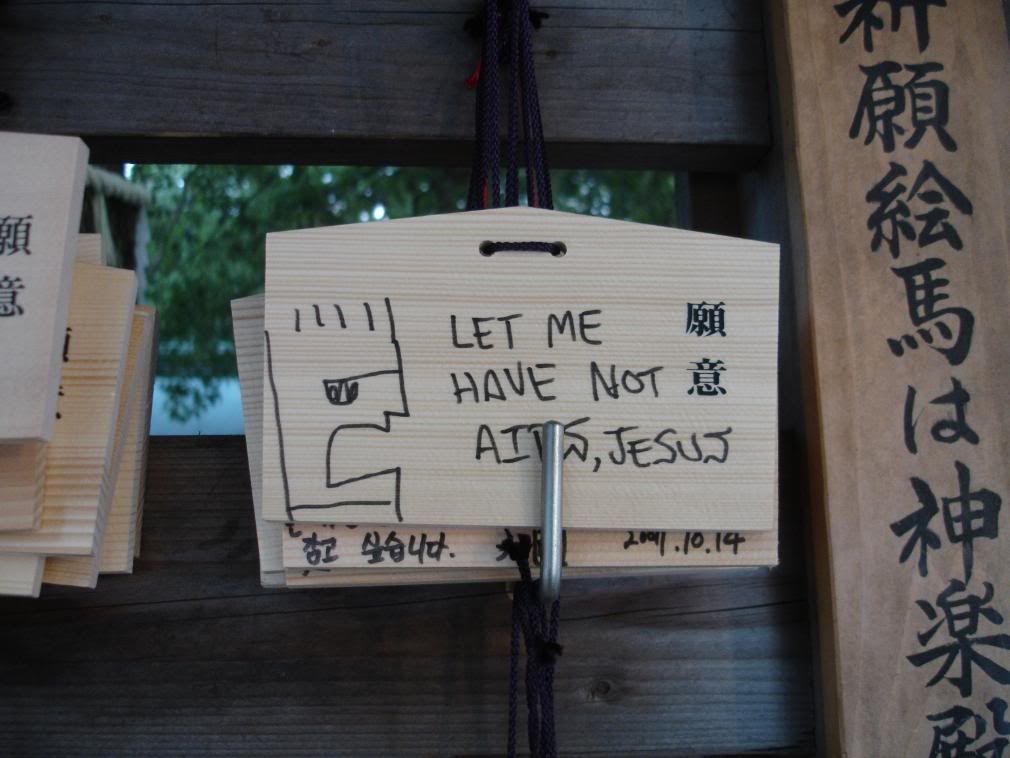





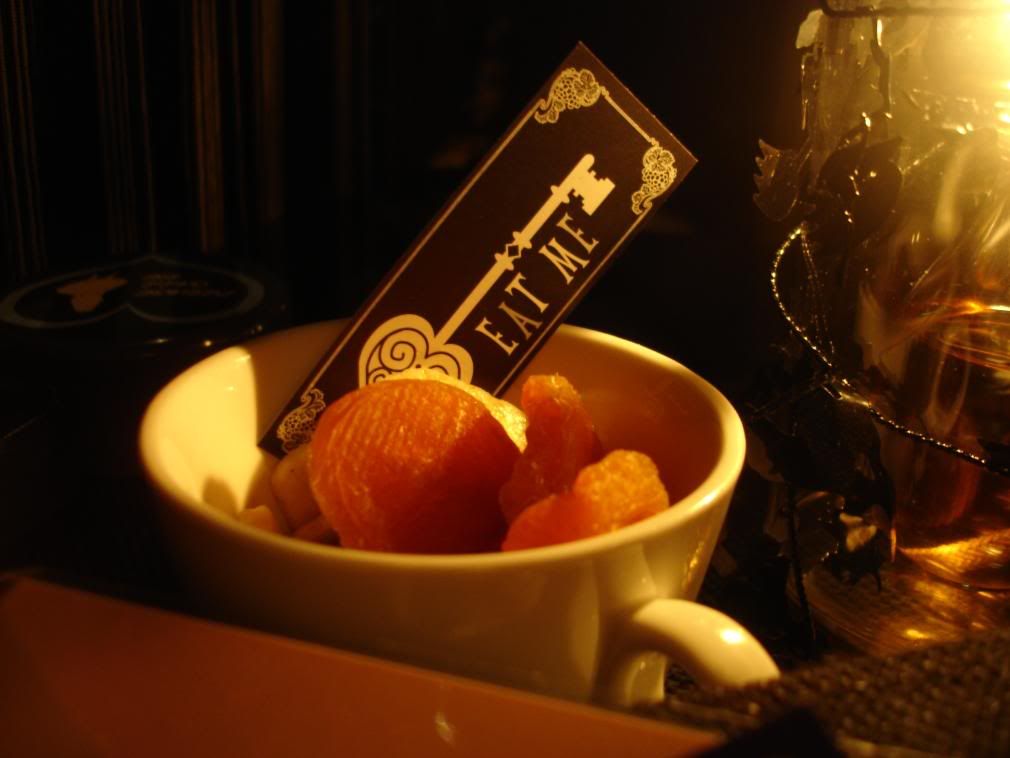
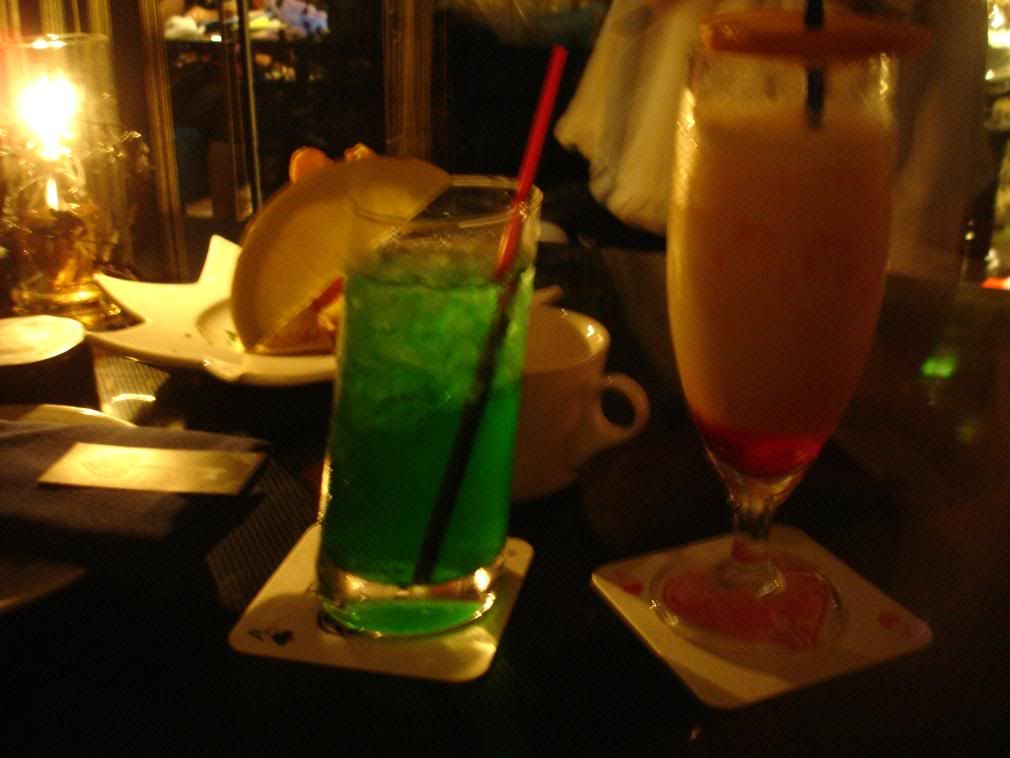

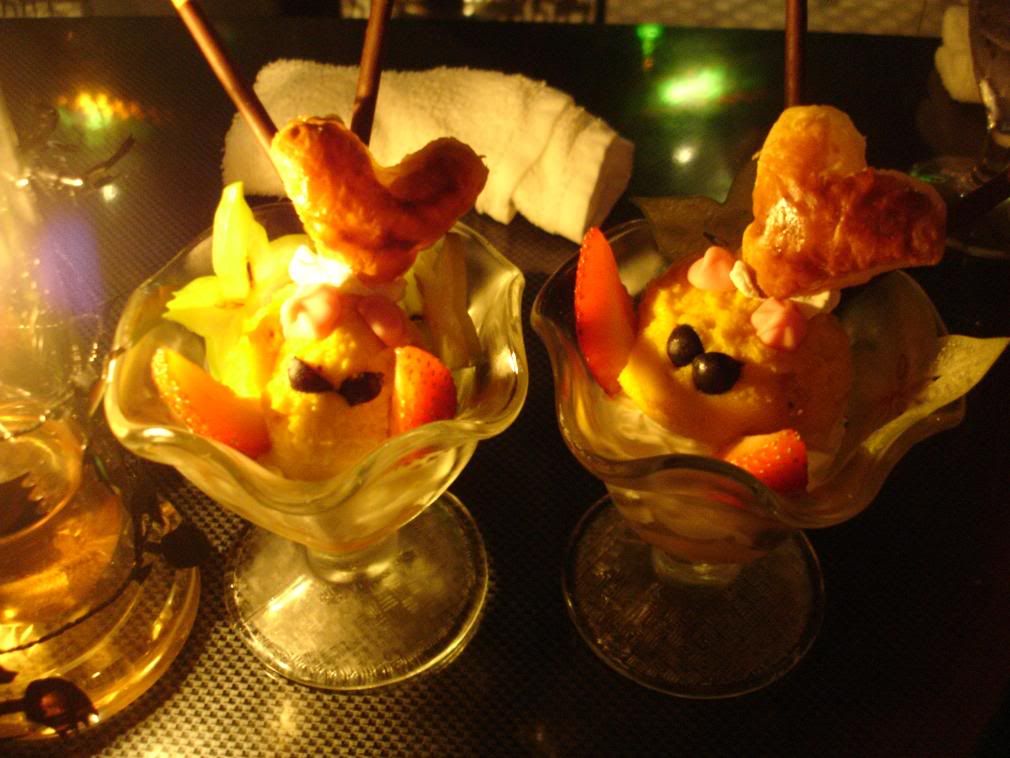
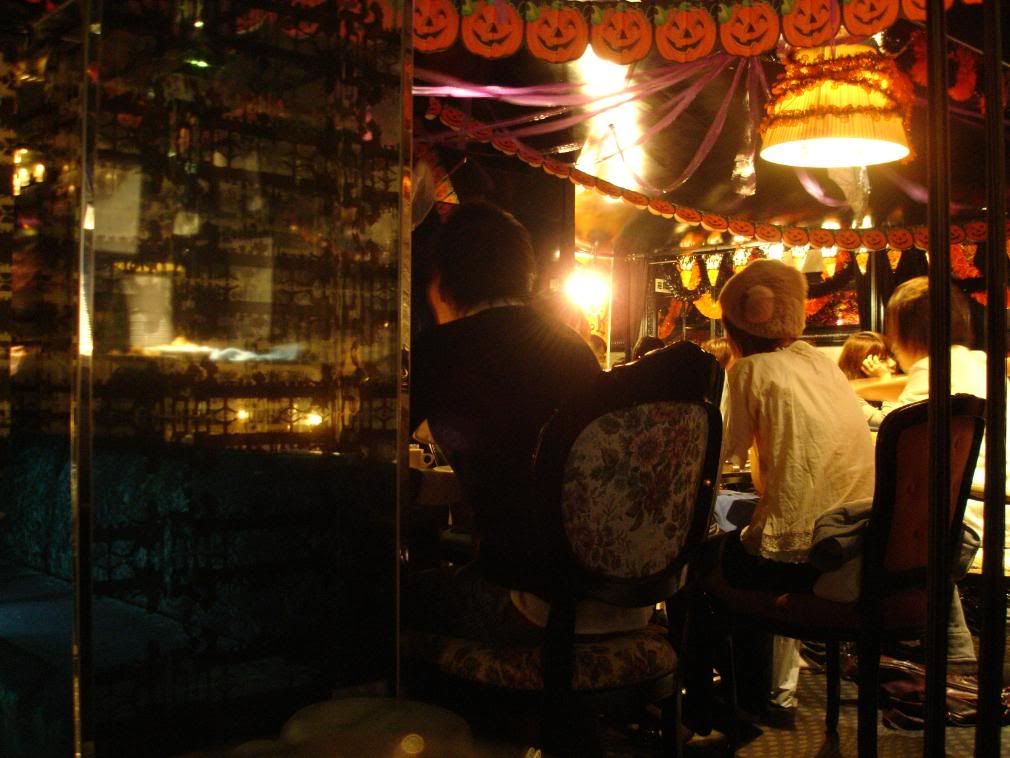
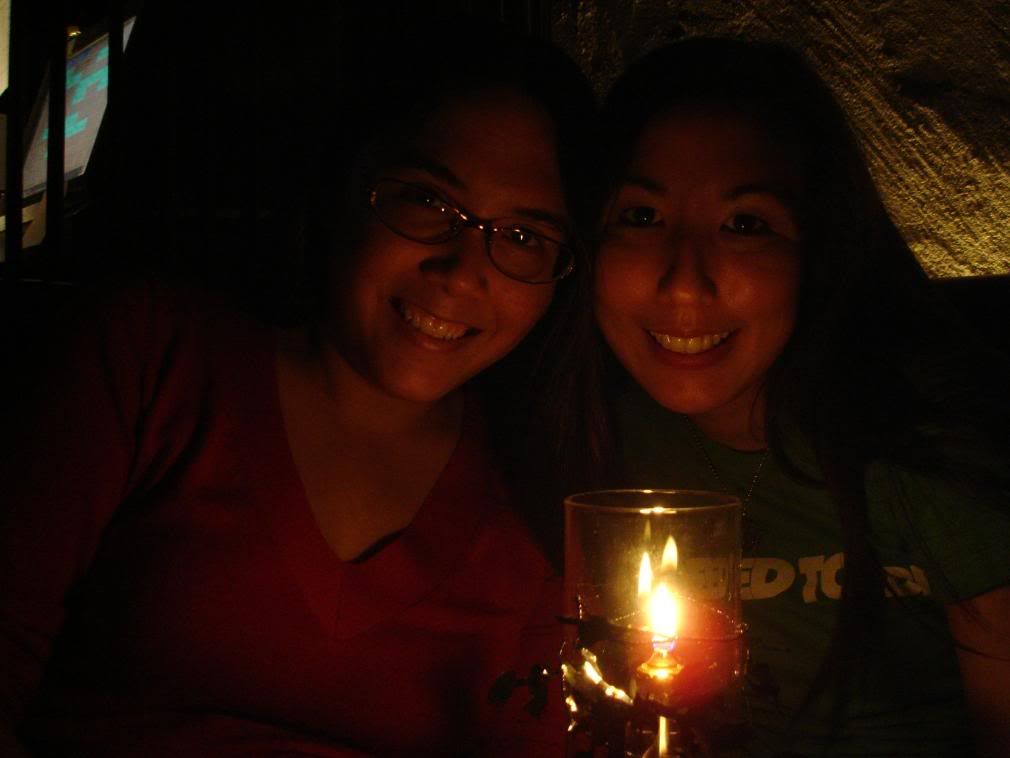
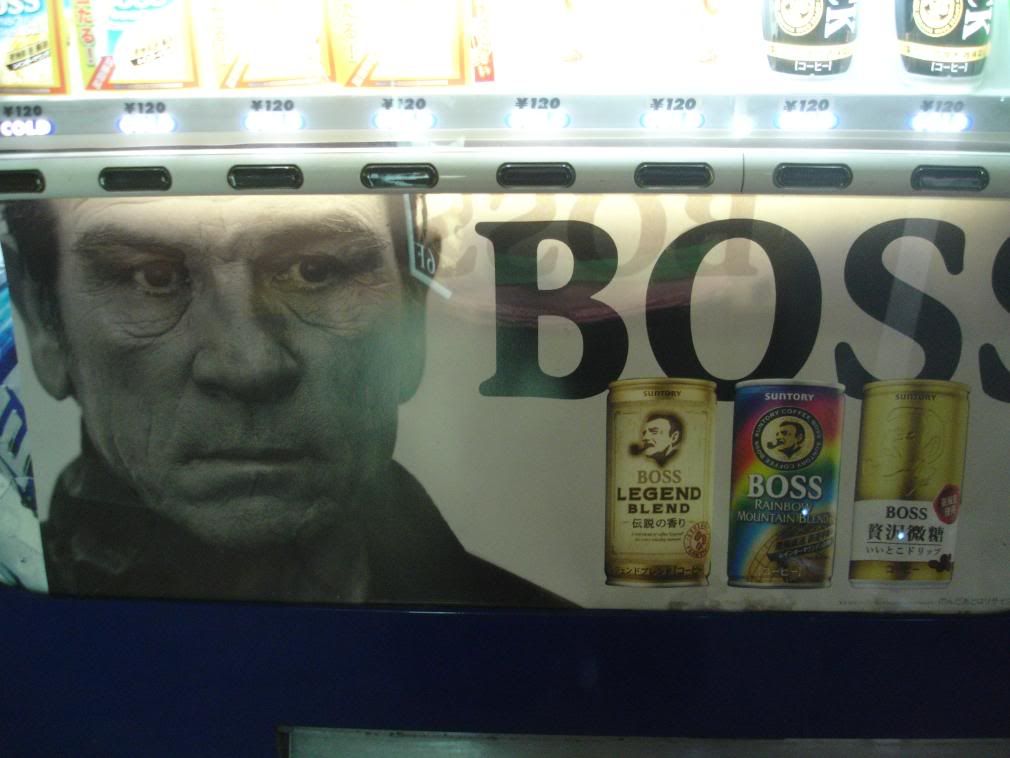


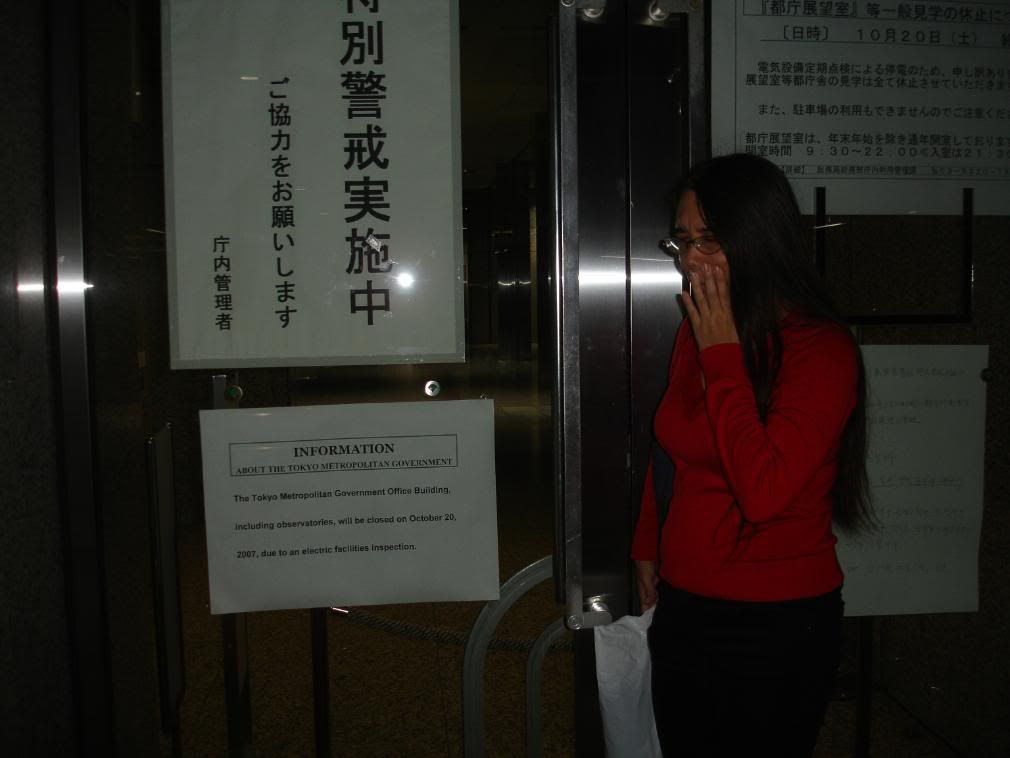






Anyhow, we started in Harajuku, and were pretty much stuck there most of the day because I kept getting distracted on Takeshita Street (but that is a later minor detail).
We first met up at Snoopytown in Harajuku and decided to go forth and grab some lunch. We ate at Jonathan's, whose menu is a weird amalgamation of western-style foods mutated to make them palatable by the Japanese, yet rendering them into forms that may prove bizarre to the hapless traveler. I think we studied the menu for at least half an hour. We're both pretty indecisive, but I ended up with bibimbap and she got a club sandwich (which came out much much later than my food, surprisingly). She says my dish was small, but I actually had to work a little to finish it :3;;; Their drink selection was amazing-- hot coffee, cold coffee, hot teas, cold teas, sodas, juices, and Calpis. What the heck, meng. Veggie/fruit juice followed up with Calpis, hello yes.
After lunch we poked around the Uniqlo and marveled at the somewhat unfriendly touch-screen menu for their computerized shopping system. Not only was it unfriendly to use, but it seemed that anything we were remotely interested in browsing was out of stock. Lame. But the track jackets were adorable and they had cashmere sweaters in every color.
After more walking we ended up at Kiddy Land, which was full of cosplaying shop girls and sweaty fanboys with Naruto t-shirts. Weird American shoppers aside, Kiddy Land is stocked completely full of adorable things. It was hard to curb the urge to pet, squeeze, or poke about every single thing in the store.
After extracting ourselves from there, we headed to some super expensive Loli stores on the lowest floor of one of the large malls. The merchandise ranged from super-happiness-kawaii type things, like ice cream cone necklaces and bunny ear mufflers, to super-kill-myself-fack-you angst boots and faux Nazi-esque armbands. The shop girls were very cute. Every store had no-camera policies. Oh well :3
We headed down Takeshita Doori and we immediately got sucked into a wide array of shops. I had to majorly debate whether or not to get this one dress which, for $5, was an amazing find. I resisted temptation, though, but I did get a long-sleeved t-shirt detailed with lace (intended for young men, not women wth). For $3 I wasn't going to pass up something that would be useful for the chilly weather. I did feel a little silly, as it is olive green, like half the things in my wardrobe, but I needed another long sleeved shirt to get through the next few weeks. Athena bought one, too, as well as a gift for her friend.
Almost to the end of Takeshita we ducked into a puri-kura place for some fun! Unfortunately I was wearing a green t-shirt, which rendered my torso invisible to the camera. I was wearing a camisole underneath, which I had to hastily rip off before the machine started yammering at us in super-kawaii that it was going to start taking pictures. We managed to get some very non-fail pictures, but ran out of time decorating them. I was happy with the results, though.
By the time we extracted ourselves from the narrow, crowded Takeshita Doori, th sun was starting to dip and we had just enough time to speedwalk to the Meiji-Jingu, snap a few pictures of the wedding procession, and check out the multi-lingual wishes before a guard came and told us GATE CLOSING.
It was getting dark, so we hopped on the subway and headed into Ginza, where I was given the choice between super-happy-kawaii or dark-loli-gothy dinner. I picked the latter, so we went to the Alice in Wonderland-themed restaurant, 幻想の国のアリス (Fushigi no Kuni no Alice). All of the staff were dressed in some sort of costume, including Cheshire Cat, Queen of Hearts, and Mad Hatter (whose hat read, subversively, "420/69"). I was a little too self-conscious to ask anyone to take pictures of them, but I really should have. They were adorable. The 7-course dinner was fun, cute, and interesting, and we both got some delicious and very beautiful cocktails (I, of course, had to have the green one with gin in it). Since she footed the bill for it, I owe her an amazing vacation in Texas, should she ever decide to visit me. We spent a good amount of time there chatting and taking in the cute Halloween decor and the adorable costumes. The Queen of Hearts was particularly pretty, and the Cheshire Cat girl was just adorable, if not a little goofy. It was a lot of fun.
We strolled around Ginza just taking in the brightly lit buildings, and decided to try the Metropolitan Building in Shinjuku. They're open until like 10 or 11 or something and have a spectacular, free view of Tokyo from the observation deck on the 45th floor. Unfortunately, after all the trouble of figuring out to escape from the station and get over to the place, it ended up being closed for "an electrical facilities inspection." LAME. Dejected, but determined to visit at another time, we went into the more lively bits of Shinjuku.
The night was still somewhat young, so we decided to find a place to sit and chat for a little bit before we had to catch our trains back home. Sore and aching feet were relieved by a sit-down at the McDonald's near the station, which had a spectacular view of the area. After a few minutes we walked around the few stores that were open before heading back to the station. We made tentative plans to get together again on Sunday, and we have a definite date on the 4th for the Ghibli museum (which is just a few stops away on the train, in Mitaka).
On the way back to Obaachan's, I literally had to cram myself into the Takao-bound train as it was packed to the brim with people. When it reached Tachikawa, I (and another 20 people) sprinted up, over, and around to the platform next to us, where the Ome-bound train was waiting. I ran down the platform, looking for the least-crowded car. Finding that they were all about the same, I ducked into a random car about halfway down. I noticed that there was an entire bench completely empty, yet half the people in the car were still standing. Someone had gotten sick all over the floor in front of the bench, so nobody wanted to be near it. Since there was none on the seat and I was freaking tired, I plopped down on the bench anyway, despite the wrinkly noses of the Japanese still standing. A young and pimply Airman was sitting next to me, and he offered me a pack of Pocky. We talked until my stop, which was sort of nice because I might have fallen asleep otherwise. When I got back to Obaachan's, the tub was full of warm water so I got to soak after my shower, which was very nice indeed.
All in all, I had a wonderful day, and all thanks to the kindness and generosity of Athena. I just hope that one day I'll be able to repay her in a way that might come close to matching what she's done (and is continuing to do) for me. I don't have a lot of cash to throw around, and she's gone to great lengths to make sure that I have an enjoyable and memorable time while I'm here.
Debra will be coming in a couple weeks, and that will be exciting, as well. I haven't seen her in like 4 and a half years or something ridiculous like that, so I'm really looking forward to hanging out with her, too. Hah, maybe we can all get together sometime :3
































Thursday, October 18, 2007
Time to go on a Diet. No, wait--to the Diet. Whatever.
I woke up feeling significantly better than before, so Mom and I decided to head into Tokyo to explore a little bit. We had no real plans, other than find something to eat and some places to take pictures. We bought the Tokunai Free Pass, which allows the ticket holder to ride around the Tokyo area all day for a flat fee. There is a train that goes from Ome all the way to Tokyo, so we hopped onto that and rode the hour or so it takes to get into the city. From Ushihama to Shinjuku, a sleepy boy sat next to me, his head drooping into his lap the entire ride. Every couple of minutes, he would wake up, blink, sit up, and then nod off again, head dangling just above his knees. I wanted to take a picture, but thought better of it.
When we arrived in Tokyo Station, we stopped quickly at the bathrooms. When we were washing our hands, Mom told me she was unable to flush the toilet no matter what she did, and she felt bad for the next person. I told her that she needed to hold her hand in front of a sensor, and it would flush after a couple seconds. She said that she didn't know you have to leave your hand there-- she thought she had to wave it or something. "Can't you read?" I cried, amused because I can't read the instructions, yet she can. She laughed, and we shook our hands dry, as there are no paper towels in train stations. We left the station and decided to walk to the Imperial Palace and explore the grounds. Mom told me brief histories of the palace, and how it was first used during the Meiji period, after the Shogun had given the power back to the Emperor. We saw many school children taking tours of the grounds and foreigners taking pictures.
After spending a good chunk of time taking pictures, we headed to the Diet building. Along the way, we passed about half a dozen taxis full of sleeping cabbies. I found it fairly amusing. When we reached the Diet, we asked the gate guards if they were doing tours. We signed up for the next tour, which would be in an hour, and walked to the Kensei Kinenkan (Parliamentary Museum) and poked around for about half an hour, checking out the historical exhibits. We were a little crunched for time, so we hurried back to the Diet building and waited in their lobby. The lady at the counter was kind enough to switch the video language to English, so I could understand it. I felt a little bad, though, as a few minutes into the video about 10 Japanese people came in. They didn't make a fuss-- I assumed they didn't mind, or were too polite to say anything.
The building is quite fantastic, but sadly un-Japanese. While the builders wanted to use mostly materials from Japan, they still fashioned it into a very European style, albeit adorned with chrysanthemum seals everywhere. There were intricate stained glass ceilings that were made of glass from America, England, and Germany; they were the only things specifically mentioned that were foreign in origin. Mom kept mentioning how much money was dropped on the construction of the building, and how much money goes into the rooms the Emperor and imperial family use (which they only visit maybe once or twice a year). "Tax payer money at work," she kept saying, as we walked past the empty, lavishly decorated rooms. Many of the people on the tour began to nod off when we sat in nosebleed seats of the assembly room, looking down onto the very Congressional house floor. A chipper female voice told us all about how parliament works and what the building was made of, but since I could barely understand anything, I found myself desperately trying to stay awake by focusing on the maintenance men performing electronics checks on the vote counters. When we got to walking again, our tour guide told us that they had recently replaced the cushy red carpet that lines the hallways, but somehow these giant, dark stains of mysterious origins appeared. I am not sure why he told us this.
Probably what fascinated me the most were the smoking stations. There are areas in the hallways for smoking, but they are obscured by glass walls and the smoker must stand next to an air intake fan, much like a fume hood, just sans hood. I watched half a dozen office workers hunched over these smoke boxes, desperately getting their nicotine fix in what I found to be a rather odd fashion.
The end of our tour led us through the garden at the front of the building where there is a walkway full of plants from all over Japan. The garden starts with plants from the southern islands, and as you progress the plant species become gradually more northernly, ending with cute pine trees from Hokkaido. We took a few pictures of the building itself, and headed back to the train station.
Mom was bent on catching a free bus that ran to Nihombashi, so we walked through the crowded Toky Station to the other side, where we could catch the bus. As we waited, a protest for what we assumed to be a hospital worker union marched by. The people were all dressed in white hospitalish clothing and waving flags, balloons, and signs. After about five minutes, the bus arrived. It was tiny-- smaller than the DASH in Los Angeles, and we decided that in the time it took for the little bus to fight through traffic we could have walked to Nihombashi twice.
By this time, we were starving. Desperate for anything that came along, we ducked into a small alley and found a little noodle shop with a ticket vending machine out front. We found those endearing, so we decided to eat there. The restaurant turned out to be quite good-- the food was cheap, and on the tables they offered wasabi, noodle water (if you decided you needed something to help you get all the bits out of the bottom of your bowl when you're done with your soup), and karikari umeboshi, which I discovered that I like quite a bit (I greatly dislike normal umeboshi). Their napkins also solved a mystery that had been bugging me in Japan. A lot of restaurants offer some very shiny paper napkins, and I could not understand why they were that way. Printed on the napkins in this shop was the explanation that they were made out of sugar cane fibers and were "tree-free" as they did not contain any wood products. I thought that was clever. I like these funny shiny napkins even more now.
After dinner, we headed to the Yamamotonoriten, which is a store specializing in seaweed and teas. We bought some hojicha and sat down for a complimentary cup of ocha. After that, we headed into the Mitsukoshi across the street. We poked around the ultra-expensive clothes before we went down to the grocery level, where all of the food vendors were more than happy to give us a second dinner in the form of samples ranging from crusty bread and gyoza to chocolate truffles and cheesecake. It was fun and delicious. We left Mitsukoshi and started heading back toward the station, ducking into the Takashimaya and doing much the same as we did in Mitsukoshi, albeit with less free food offerings.
We caught a train to Shinjuku so we could look out the observation deck on the 45th floor of the Metropolitan Building. I tell you what-- that is a FAST elevator. We were on the 45th floor in what felt like about 30 seconds or less. The view? AMAZING. I always knew Tokyo was huge, but it's difficult to really visualize the enormity of the city until you see it with your own eyes. Even though it was night and all the lights of the city were on, the city seemed to stretch farther than what I could see. I snapped some pictures that unfortunately did not come out as well as I wished.
After we left there, we went to Akihabara just to quickly poke around, get a feel for where things were, and get a few pictures. It's definitely got a high density of electronics stores, and I will be sure to hit it up when I need to burn some DVDs to distribute my pictures. I was amazed, not at how tall the stores were, but how narrow and claustrophobic they felt on the inside. It was pretty weird-- it felt like being in a town house or something.
From Akiba, we unwisely took a train back to Shinjuku as opposed to Tokyo, which in hindsight would have been a better choice as that is where the line starts and we would have been guaranteed a seat on the Chuo line back to Fussa. Instead, we had to stand for a painfully long time from Shinjuku back to Tachikawa. I was able to snag Mom a seat about halfway through, though. Surprisingly, the train from Tachikawa to Fussa was fairly crowded, too, and she was not able to get a seat until the stop before ours.
We wound down the evening by watching some TV and drinking tea. After a shower, I was ready to crash out hard core.


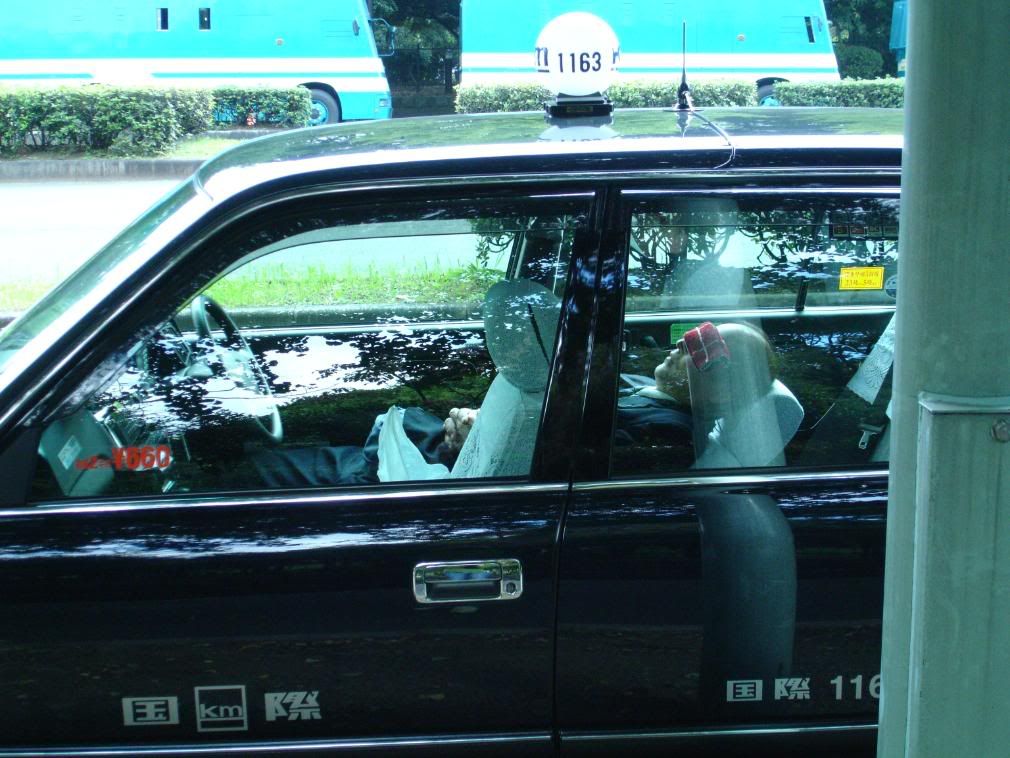
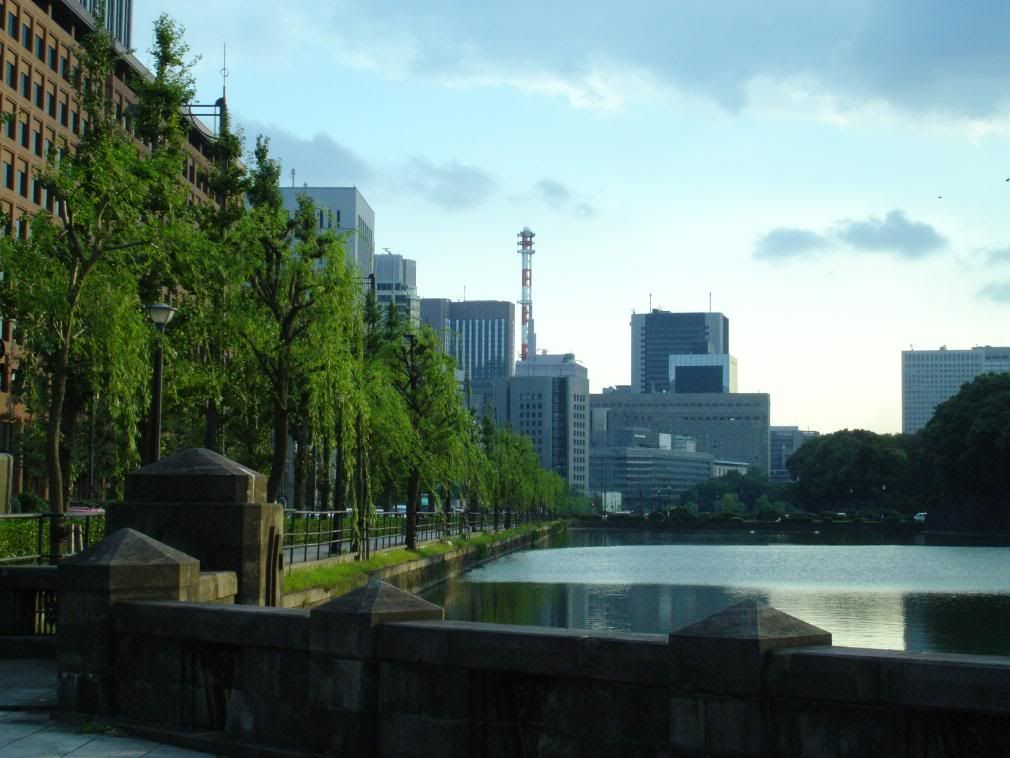




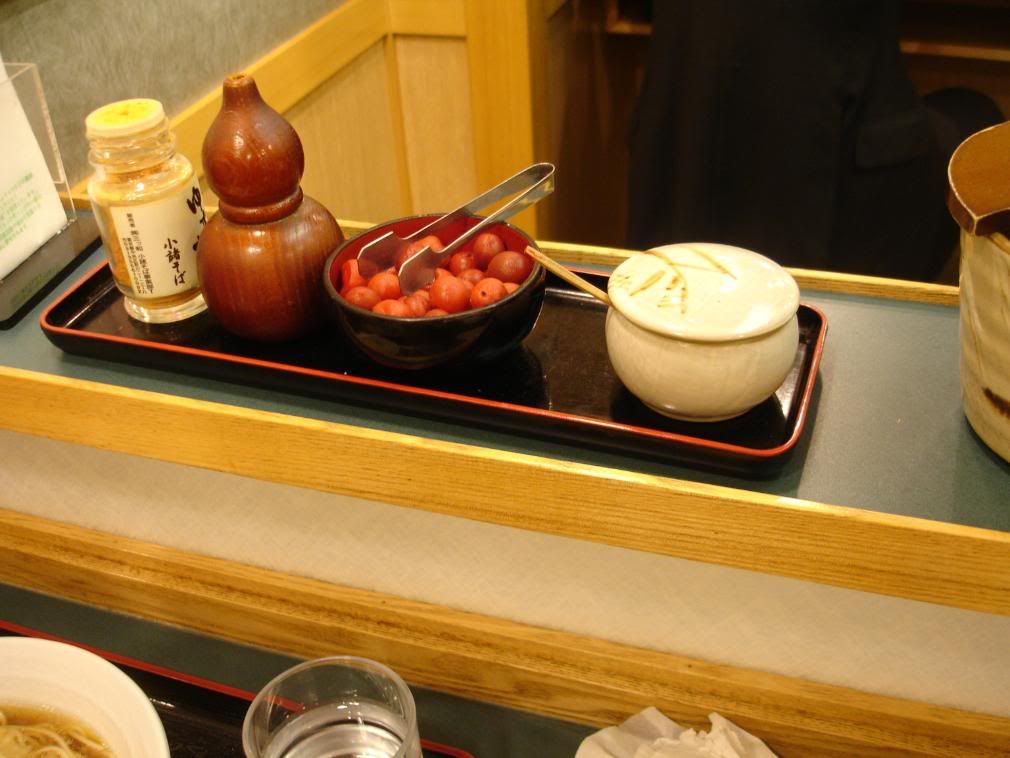
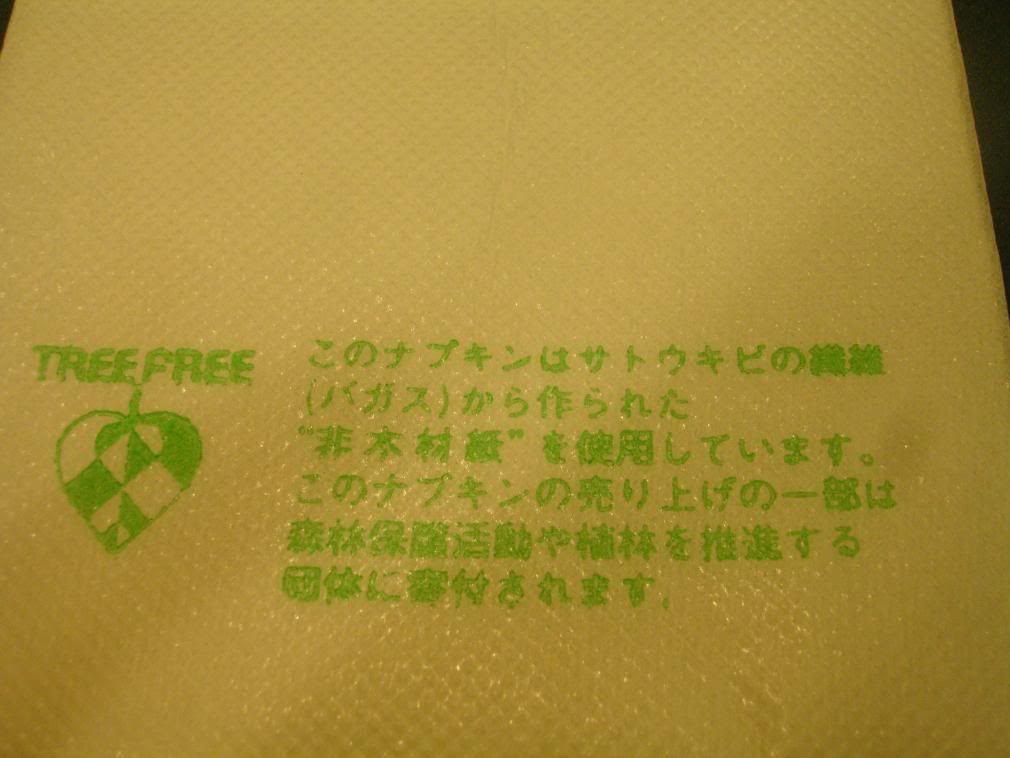

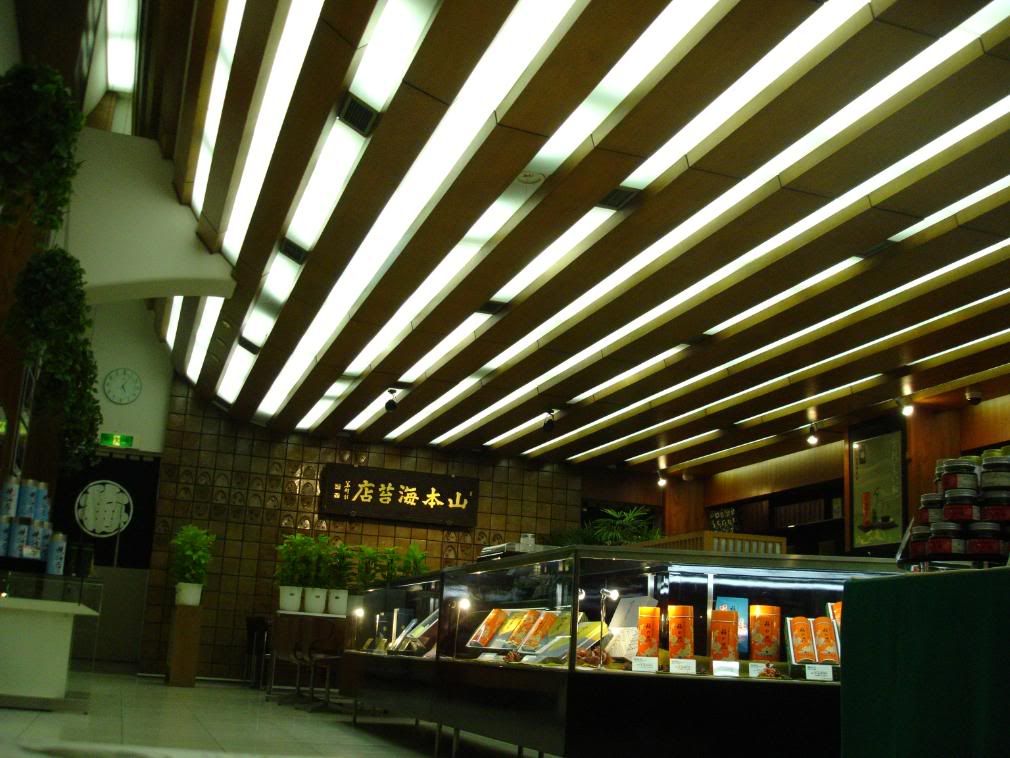
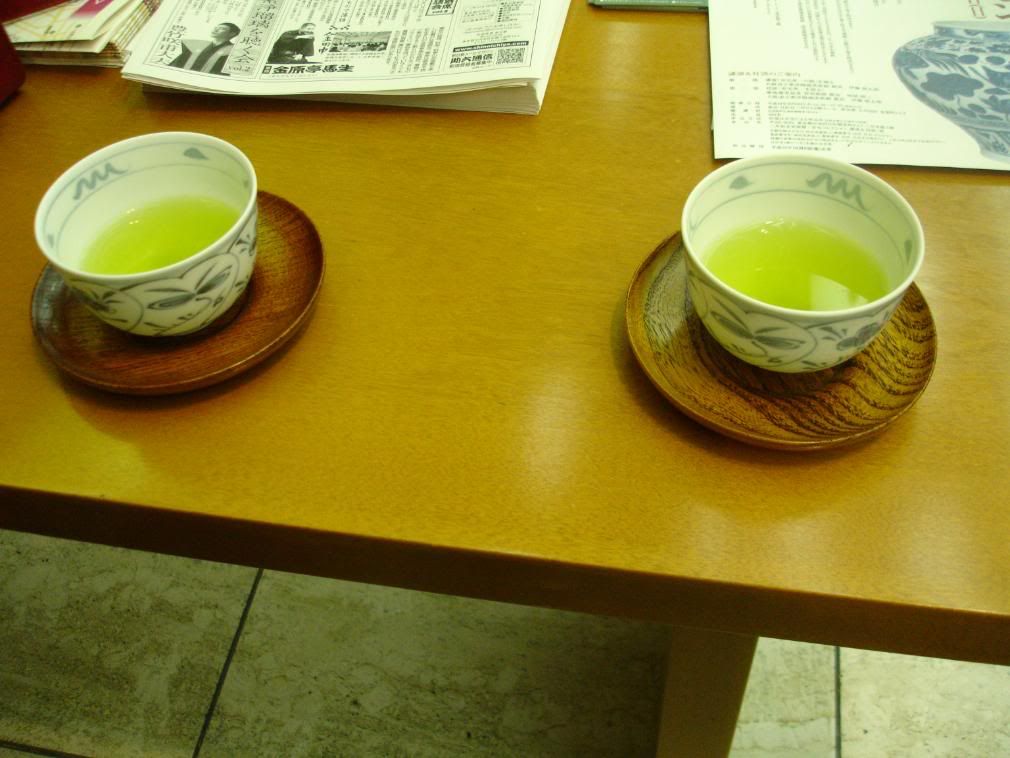


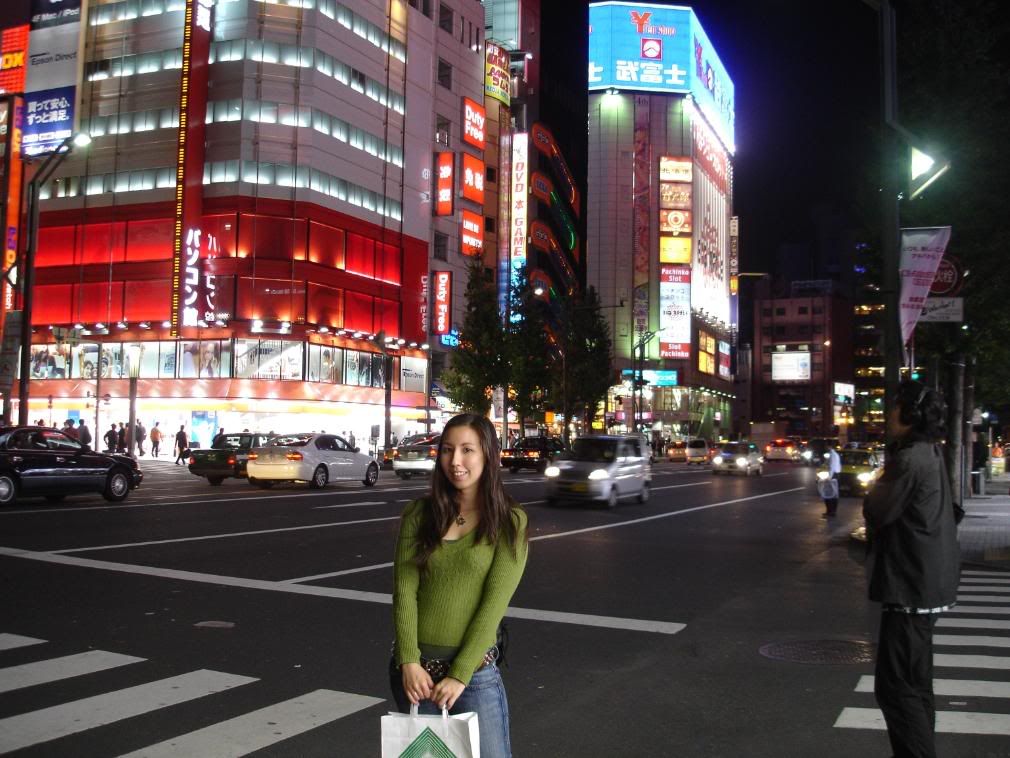
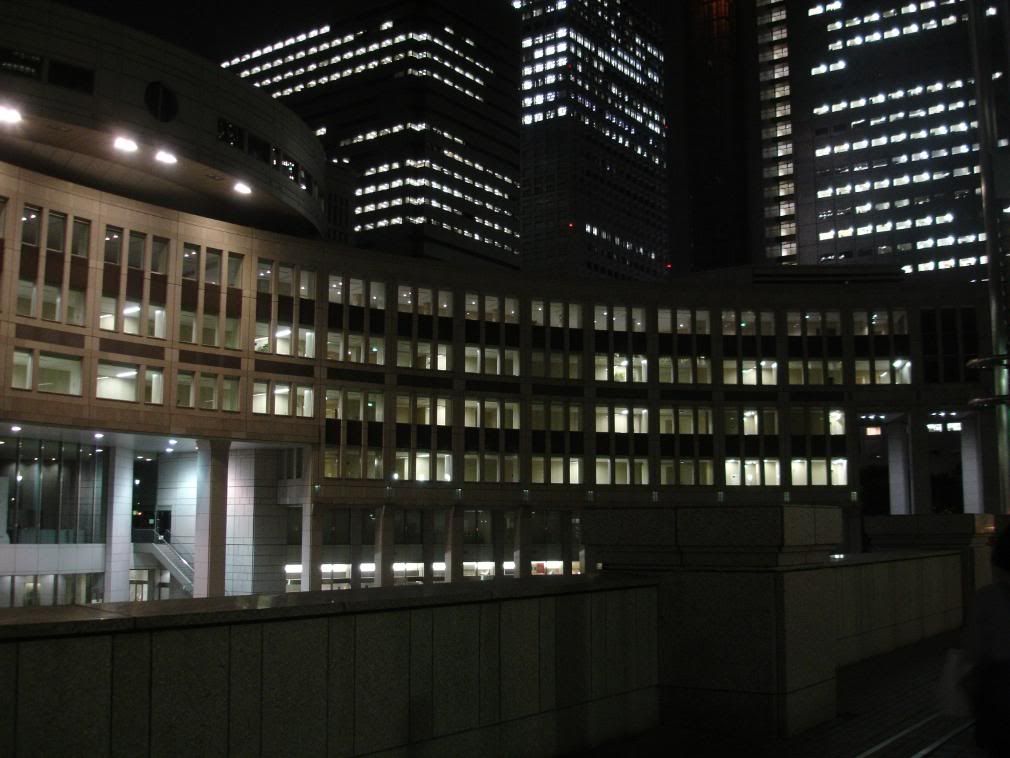
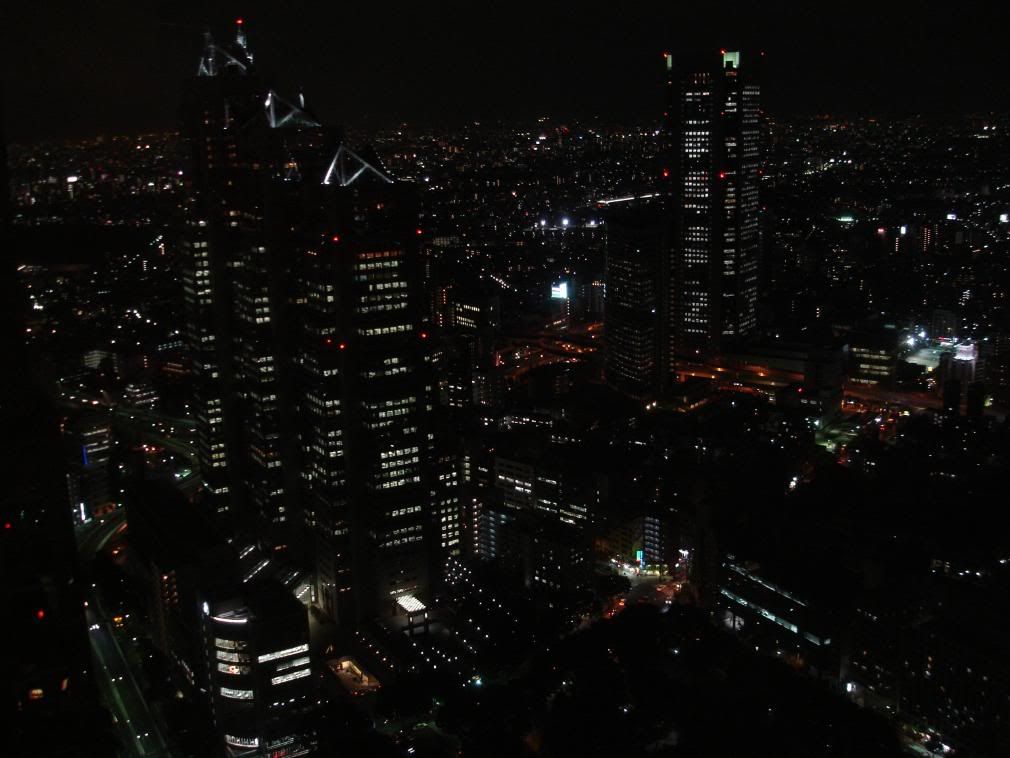

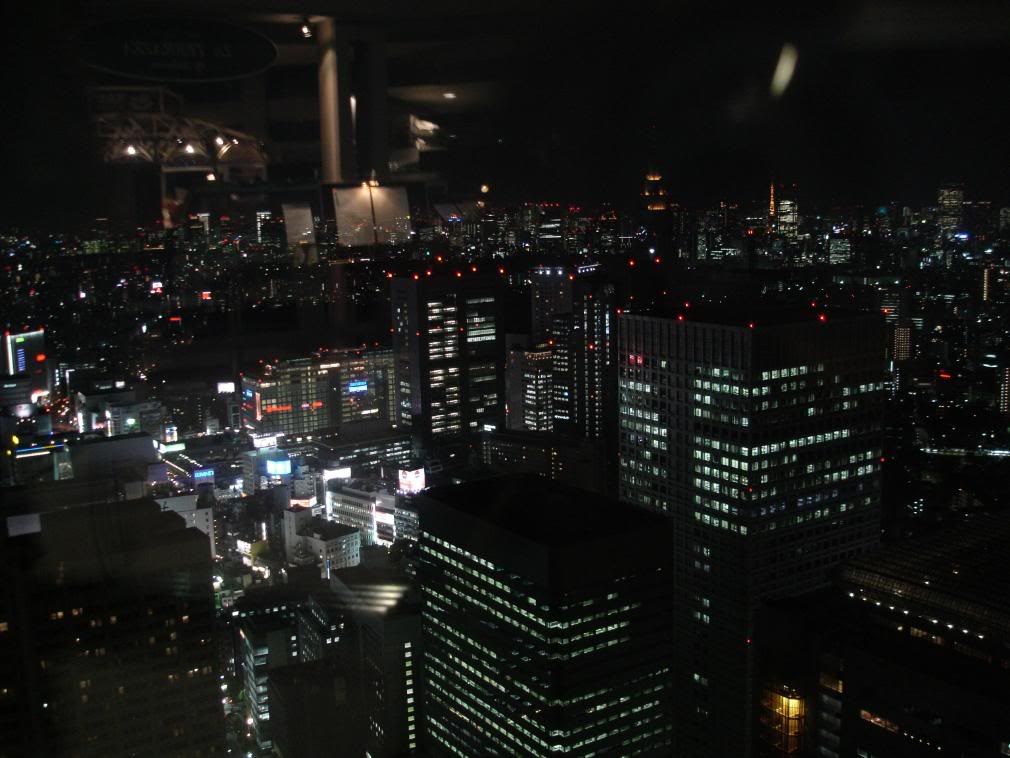
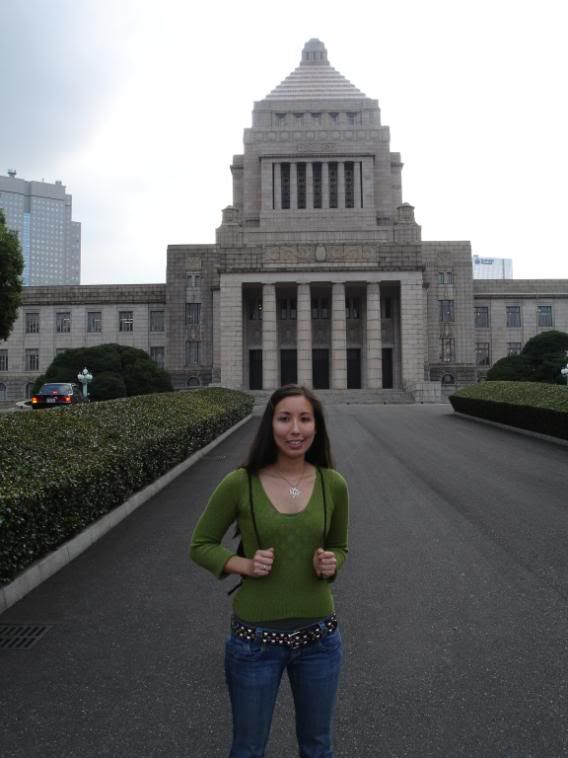
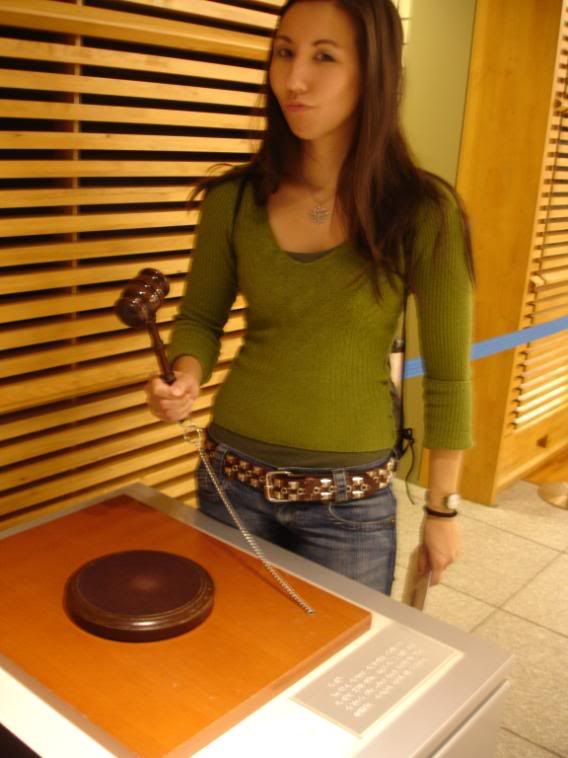

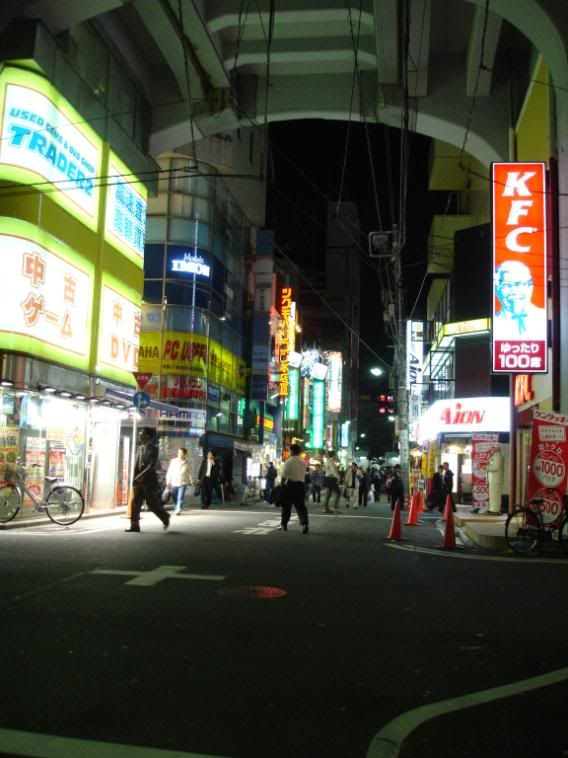
When we arrived in Tokyo Station, we stopped quickly at the bathrooms. When we were washing our hands, Mom told me she was unable to flush the toilet no matter what she did, and she felt bad for the next person. I told her that she needed to hold her hand in front of a sensor, and it would flush after a couple seconds. She said that she didn't know you have to leave your hand there-- she thought she had to wave it or something. "Can't you read?" I cried, amused because I can't read the instructions, yet she can. She laughed, and we shook our hands dry, as there are no paper towels in train stations. We left the station and decided to walk to the Imperial Palace and explore the grounds. Mom told me brief histories of the palace, and how it was first used during the Meiji period, after the Shogun had given the power back to the Emperor. We saw many school children taking tours of the grounds and foreigners taking pictures.
After spending a good chunk of time taking pictures, we headed to the Diet building. Along the way, we passed about half a dozen taxis full of sleeping cabbies. I found it fairly amusing. When we reached the Diet, we asked the gate guards if they were doing tours. We signed up for the next tour, which would be in an hour, and walked to the Kensei Kinenkan (Parliamentary Museum) and poked around for about half an hour, checking out the historical exhibits. We were a little crunched for time, so we hurried back to the Diet building and waited in their lobby. The lady at the counter was kind enough to switch the video language to English, so I could understand it. I felt a little bad, though, as a few minutes into the video about 10 Japanese people came in. They didn't make a fuss-- I assumed they didn't mind, or were too polite to say anything.
The building is quite fantastic, but sadly un-Japanese. While the builders wanted to use mostly materials from Japan, they still fashioned it into a very European style, albeit adorned with chrysanthemum seals everywhere. There were intricate stained glass ceilings that were made of glass from America, England, and Germany; they were the only things specifically mentioned that were foreign in origin. Mom kept mentioning how much money was dropped on the construction of the building, and how much money goes into the rooms the Emperor and imperial family use (which they only visit maybe once or twice a year). "Tax payer money at work," she kept saying, as we walked past the empty, lavishly decorated rooms. Many of the people on the tour began to nod off when we sat in nosebleed seats of the assembly room, looking down onto the very Congressional house floor. A chipper female voice told us all about how parliament works and what the building was made of, but since I could barely understand anything, I found myself desperately trying to stay awake by focusing on the maintenance men performing electronics checks on the vote counters. When we got to walking again, our tour guide told us that they had recently replaced the cushy red carpet that lines the hallways, but somehow these giant, dark stains of mysterious origins appeared. I am not sure why he told us this.
Probably what fascinated me the most were the smoking stations. There are areas in the hallways for smoking, but they are obscured by glass walls and the smoker must stand next to an air intake fan, much like a fume hood, just sans hood. I watched half a dozen office workers hunched over these smoke boxes, desperately getting their nicotine fix in what I found to be a rather odd fashion.
The end of our tour led us through the garden at the front of the building where there is a walkway full of plants from all over Japan. The garden starts with plants from the southern islands, and as you progress the plant species become gradually more northernly, ending with cute pine trees from Hokkaido. We took a few pictures of the building itself, and headed back to the train station.
Mom was bent on catching a free bus that ran to Nihombashi, so we walked through the crowded Toky Station to the other side, where we could catch the bus. As we waited, a protest for what we assumed to be a hospital worker union marched by. The people were all dressed in white hospitalish clothing and waving flags, balloons, and signs. After about five minutes, the bus arrived. It was tiny-- smaller than the DASH in Los Angeles, and we decided that in the time it took for the little bus to fight through traffic we could have walked to Nihombashi twice.
By this time, we were starving. Desperate for anything that came along, we ducked into a small alley and found a little noodle shop with a ticket vending machine out front. We found those endearing, so we decided to eat there. The restaurant turned out to be quite good-- the food was cheap, and on the tables they offered wasabi, noodle water (if you decided you needed something to help you get all the bits out of the bottom of your bowl when you're done with your soup), and karikari umeboshi, which I discovered that I like quite a bit (I greatly dislike normal umeboshi). Their napkins also solved a mystery that had been bugging me in Japan. A lot of restaurants offer some very shiny paper napkins, and I could not understand why they were that way. Printed on the napkins in this shop was the explanation that they were made out of sugar cane fibers and were "tree-free" as they did not contain any wood products. I thought that was clever. I like these funny shiny napkins even more now.
After dinner, we headed to the Yamamotonoriten, which is a store specializing in seaweed and teas. We bought some hojicha and sat down for a complimentary cup of ocha. After that, we headed into the Mitsukoshi across the street. We poked around the ultra-expensive clothes before we went down to the grocery level, where all of the food vendors were more than happy to give us a second dinner in the form of samples ranging from crusty bread and gyoza to chocolate truffles and cheesecake. It was fun and delicious. We left Mitsukoshi and started heading back toward the station, ducking into the Takashimaya and doing much the same as we did in Mitsukoshi, albeit with less free food offerings.
We caught a train to Shinjuku so we could look out the observation deck on the 45th floor of the Metropolitan Building. I tell you what-- that is a FAST elevator. We were on the 45th floor in what felt like about 30 seconds or less. The view? AMAZING. I always knew Tokyo was huge, but it's difficult to really visualize the enormity of the city until you see it with your own eyes. Even though it was night and all the lights of the city were on, the city seemed to stretch farther than what I could see. I snapped some pictures that unfortunately did not come out as well as I wished.
After we left there, we went to Akihabara just to quickly poke around, get a feel for where things were, and get a few pictures. It's definitely got a high density of electronics stores, and I will be sure to hit it up when I need to burn some DVDs to distribute my pictures. I was amazed, not at how tall the stores were, but how narrow and claustrophobic they felt on the inside. It was pretty weird-- it felt like being in a town house or something.
From Akiba, we unwisely took a train back to Shinjuku as opposed to Tokyo, which in hindsight would have been a better choice as that is where the line starts and we would have been guaranteed a seat on the Chuo line back to Fussa. Instead, we had to stand for a painfully long time from Shinjuku back to Tachikawa. I was able to snag Mom a seat about halfway through, though. Surprisingly, the train from Tachikawa to Fussa was fairly crowded, too, and she was not able to get a seat until the stop before ours.
We wound down the evening by watching some TV and drinking tea. After a shower, I was ready to crash out hard core.
























Subscribe to:
Posts (Atom)